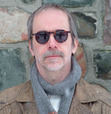Ian Colford's Blog
March 10, 2025
Best Reads of 2024
In 2024, between working on a new fiction manuscript and writing reviews, reading remained a favourite activity. I find a “mixed bag” approach to selecting books to read keeps things interesting. I’m a bit of a magpie when it comes to the selection process, choosing new and older titles, books by familiar authors along with authors new to me, many Canadian but also books from the UK and the US, as well as a healthy number of books from other places translated into English. Sometimes the selection is based on a review. Other times I choose a book randomly, because it’s there, or because the cover is interesting.
I recently discovered two publishers offering a fascinating selection of titles from around the globe. Peirene Press is an independent publisher based in the UK, “publishing books from 25 countries and 20 different languages.” Archipelago Books is located in New York and describes themselves as “a nonprofit press committed to publishing exceptional translations of classic and contemporary world literature.” Readers with an interest in expanding their horizons might want to check out the titles on offer from these innovative and adventurous presses.
I continue to find reviewing books a rewarding and challenging way to keep my mind active as I enter year eight of my retirement. The titles listed below (in no particular order) are a few of the highlights from among the 50+ books I read in 2024.
Kudos as well to the graphic designers responsible for all six of these attractive and arresting covers!
Ⴔ

The Harvesters, Jasmina Odor’s luminous debut novel, depicts Mira and her nephew Bernard’s brief visit to Paris through Mira’s inquiring, meditative perspective. Mira and Bernard are both suffering the effects of recent losses. In her forties, childless and recently divorced from David, Mira’s past is very much on her mind. The purpose of the journey is to visit Mira’s mother—Bernard’s grandmother—in Croatia, which Mira fled during the war, eventually settling in Canada. Mira’s father has died, and her mother recently suffered a stroke, so Mira’s level of concern is elevated. The 3-night Paris stopover was Bernard’s idea, a chance for him to revisit the site of a trip he took the previous year with girlfriend Aisha while he broods over their subsequent breakup and his role in what happened. But Mira also has a hidden motive: visiting Paris gives her a chance to perhaps reconnect with Mirko, a boyfriend from the years prior to her marriage, with whom she lost contact but has now tracked down via the internet. Mira has a high opinion of her nephew and regards him as a gentle and painfully self-aware young man whose heart is easily broken. Indeed, their initial foray into the Paris streets hits a detour when they come across an injured pigeon, which Bernard insists they must bring to the hotel and nurse back to health. To Mira, Bernard seems to be at a loose end, undecided about his future and still wistfully in love with Aisha (constantly checking his phone to see if his ex is responding to his texts). But Mira is also perplexed by Bernard’s behaviour, when he seeks an intimate connection with every young woman he meets, including a hotel maid and Alice, the daughter of an American family staying at the same hotel. For her own part, Mira seems stuck in the hollow space between her new and old lives, puzzling over a divorce she’s not sure she even wanted, wondering where David is and what he’s doing, and distracted by concerns regarding her mother’s health and welfare. With limpid, arresting prose, Jasmina Odor captures the restlessness of two characters nostalgic for a safe, settled past, wanting more but wary of moving forward into a future that holds so many unknowns. Like her previous book, the brilliant story collection You Can’t Stay Here (2017), this is a sophisticated, moving and psychologically probing work brimming with insightful observations on loss, transition, and the thorny—sometimes baffling—intricacies of the human heart. With The Harvesters, her first novel, Jasmina Odor proves herself to be a writer of the first order whose fiction is worth seeking out and is sure to reward repeated readings.
Ⴔ

Love, Hanne Ørstavik’s acclaimed novella (originally published as Kjurlighet in 1997), tells a haunting and ultimately tragic story of a young mother, Vibeke, and her son, Jon, who have recently moved from a city to a much smaller town in northern Norway. It is late in the day, late in the year and very cold. Jon is anticipating tomorrow, his 9th birthday, and the celebration he is sure his mother is planning. After supper Jon leaves to sell raffle tickets for his school sports club. He wants to be out for a while, to give his mother time to bake the cake and wrap his presents. But the old man at the first house he approaches buys all the tickets. So, Jon returns home, but quickly leaves again, for the same reason as before. In the meantime, Vibeke has taken a shower. She’s pleased with how her new job is going and thinks she deserves a treat, which for her is a trip to the library to return the books she’s read and to borrow new ones. Vibeke lives in her head, reading non-stop, fantasizing romantic encounters. She’s also fixated on her appearance and preoccupied with making a good impression on her new work colleagues. Jon is not her priority. She’s forgotten his birthday, and through inattention and distraction has not seen her son leave the house the second time. When she calls out for him and he doesn’t answer, she thinks, “Most likely he’s doing something in his room.” Vibeke prepares herself, goes out, gets in the car and drives off. The remainder of Ørstavik’s novella is concerned with Jon and Vibeke’s various encounters, which have a random quality about them but movingly demonstrate the emotional distance that exists between mother and son—one self-obsessed and looking for love, the other distracted by expectations and the newness of everything around him—and the vastly different manner in which they approach and perceive the world. Ørstavik’s third-person omniscient narrative flits back and forth between Jon and Vibeke, sometimes from one paragraph to the next, in a way that might be jarring but acts as a constant reminder of the separate worlds that mother and son occupy and, as the evening progresses, the diminishing odds of them reconnecting. Ørstavik’s prose, expertly rendered into English by Martin Aitkin, gleams like the frozen landscape it so capably evokes. Love is an odd and disturbing little book that places a clear-eyed focus on how each of us is confined to a discrete universe of awareness and emotion that sets us apart from everyone else. Writing powerfully and without sentiment, Hanne Ørstavik shows that she is well acquainted with the lonely passion of the human heart.
Ⴔ

Breakdown, Cathy Sweeney’s searing debut novel, is a sharply observed comic drama of a woman who realizes she’s been playing a role for which she is no longer suited. On a November morning—a morning just like countless others— Sweeney’s unnamed narrator wakes up in her suburban Dublin home, prepares herself for work and leaves the house. But when she reaches the intersection exiting the estate, instead of making her customary right turn toward the city, she turns left, and her adventure begins. It’s an impulsive act, which, at any moment, could be reversed. The woman, in her mid-fifties, has no plan. She does not devote a great deal of thought to what she’s doing or where she’s going. At this early point in the story, her observations are largely mundane: “The sky is full of November white, more absence than colour.” But as her journey into the unknown continues, we learn more about the life she’s escaping and what may have pushed her over the edge. It is a comfortable life, ordinary and safe; a life filled with joy and love, but also disappointment, compromise and numbing routine. And as her self-scrutiny deepens and further vistas are revealed, she comes to recognize that no single event has sparked her decision to leave it all behind. The process that’s culminated in her absconding has been ongoing for years. She is also far from ignorant of the fact that her decision will alter not just her own life, but other lives. As the hours pass—as she ignores a stream of phone and text messages from her husband and children—she comes face-to-face with the repercussions of her actions. With each mile traveled, it becomes more difficult for her to turn back. Sweeney constructs her novel along two compelling narrative threads. In the first, we follow the narrator’s journey from her Dublin home to a remote cottage in rural Wales, a trip taken via car, bus, train and ferry. This, it turns out, is flashback. The other thread is the present day, when she’s been settled in the cottage for about a year, tending her garden, making new friends and living a simple, solitary, admittedly selfish, but apparently gratifying life. Sweeney’s staccato rhythms and clipped sentences capture perfectly the progression of emotional states that her narrator experiences as her circumstances evolve, turning this into an unsettling and often breathtaking work of fiction with the forward propulsion of a whodunit. At times the suspense is agonizing, as the narrator crosses another unfamiliar threshold or places her trust in a stranger. But though Breakdown’s entertainment value is undeniable, it is Cathy Sweeney’s subtly devastating commentary on the modern world we’ve constructed for ourselves that truly resonates.
Ⴔ

For her entire life, Hannah Belenko has been trying to escape the toxic legacy of her childhood. Raised in suburban Ontario by a controlling brute of a father who ruled the household with an iron fist, a mother who learned the hard way that survival depends on keeping her mouth shut, and an older brother who’s following in his father’s footsteps, Hannah has been indoctrinated into a “family code” of silence. When we meet Hannah in 2018, she’s 20-something, living in Ontario with her 6-year-old son Axel, and facing questions from authorities about her lifestyle. Hannah’s troubles are not new. She already lost her daughter Faye to the foster system and her parenting is being monitored by Ontario’s child advocacy service. After a violent confrontation with her abusive boyfriend, she flees to Halifax, where she hopes to re-connect with Bashir, Axel and Faye’s biological father, and squeeze him for the child-support he owes her. Hannah’s goal has always been a better life for her children, but everything she does backfires. There’s never enough money and she can only find relief from the constant struggle to get by with booze and drugs. In the novel’s initial chapters, the reader can see that it is Hannah’s angry, selfish, and impulsive behaviour that presents the most serious impediment to achieving the better life she’s seeking. Abrasive and combative, perpetually in survival mode, she blames others for her problems. She is distrustful of authority and suspicious of anyone who offers a helping hand. The Family Code, Wayne Ng’s gripping second novel, chronicles a pivotal year and a half in Hannah’s life as she struggles to cast off the lingering effects of a traumatic childhood and for the first time find the courage to confront her demons. Hannah and Axel narrate in alternating chapters, often providing conflicting accounts of the same events. Hannah Belenko is not an easy character to like. She is quick to anger and often takes her frustrations out on her son. She is dishonest with herself and others and can’t resist the temptation of a quick buck. But as the harrowing story of her childhood is gradually revealed, we begin to understand how she became the way she is. After a series of missteps, ill-fated detours and poor choices, she finally realizes that she won’t save herself and Axel until she stops running from the past that haunts her, and by the end of the book she’s more than won our sympathy. Wayne Ng’s novel is not an easy read, filled as it is with graphic depictions of violence, cruelty, and the casual mayhem of physical and psychological abuse. But it is here, in its unvarnished honesty, where its power resides.
Ⴔ

In Sara Mesa’s engrossing and deliciously enigmatic novel Un Amor, Nat has left her life in the city and rented a house in rural La Escapa. Here, in a tiny village many miles from the nearest large town, she embarks upon a translation project. But there are many things weighing on Nat’s mind. She left her previous job under a cloud and has not yet reached an understanding of how she could have allowed an episode of reckless poor judgment derail her life and career. Nat is unattached, a woman alone, and it’s not long before she begins to see that this circumstance adds another to the list of challenges she is facing. Soon after moving in, for companionship, she adopts a dog, which she names Sieso. Disappointingly, the animal is nervous, unpredictable and distant. But she decides to keep him, despite Sieso not being well suited for the purpose she’d intended. For Nat, life in La Escapa does not proceed smoothly. Her landlord, a creepy misogynist with an ax to grind, dismisses her complaints about the leaky roof and tells her she can fix the leaks herself or catch the drips in pots and pans. He doesn’t care. But the landlord’s negligence proves fateful. One of Nat’s neighbours, Andreas, a handyman of sorts, known locally as “The German,” sees what she’s putting up with and offers to fix the roof if Nat, in turn, provides a service for him. Mesa maintains heightened tension throughout the book, which is narrated in the third person from Nat’s guarded perspective. Her interactions with her neighbours are, without exception and for a variety of reasons, fraught, and the uncurrent of menace that pervades the story results from Nat’s sceptical nature, tragic lack of confidence, and tendency to question everyone’s motives, including her own. We spend the entirety of Un Amor observing La Escapa and its residents from Nat’s point of view, and it is not a happy place to be. Nat takes nothing at face value. Her mind is always dissecting, always seeking answers. She is painfully aware of her outsider status. It makes her uncomfortable, being on the outside looking in. And yet at virtually every turn her actions raise hackles and guarantee that she will never be accepted into the community. For a while the amor of the book’s title provides Nat with a refuge, a physical distraction away from her churning thoughts. But in the end, it turns corrosive and causes disappointment and heartache. The rural world that Mesa conjures is placid on the surface, but her masterstroke is gradually revealing it to be a mysterious and unwelcoming place seething with distrust, resentment and hostility. In Un Amor Sara Mesa fearlessly plumbs the depths of human passion and depravity. Disturbing and filled with contradiction, Un Amor is never an easy novel. But it is also never less than fascinating.
Ⴔ

There is a breathless quality to Keith Hazzard’s collection of 60 tersely written fictions, aptly titled Brief Lives. As the title suggests, these are lives summed up, sometimes in a single paragraph, but complete with incident, romance, ironic twists of fate and blunt statement of fact: a roller-coaster with each denouement followed headlong by the next. Hazzard takes his inspiration from quotidian experience. His characters are the husbands, wives, sons, daughters, luckless young men, divorcees, accident victims, criminals and adulterers among us. Many of the pieces proceed by implication, the driving force being what’s left unsaid, hovering between the lines. “Love and Strife” describes a love triangle at a hat factory: Dennis lives with Laureen but falls in love with Shirley. Difficulties ensue, firings, estrangements. But the story turns on a single line: “Time swung its axe.” And afterward, everyone gets what’s coming to them. In “All Hallows,” it’s Halloween and Bruce Rutledge is savoring middle age as life’s pressures ease up. Then he gets a call “on the burner phone,” and cooly fetches a body for disposal, but won’t let the job weigh on his mind because he has “candy to pick up and a pumpkin to carve.” Other pieces strike a more contemplative, even nostalgic tone. “Satellite,” the enigmatic tale of the final months of Phyllis and Lowell Steinbach’s marriage, ends with Lowell “living on the other side of the world, planning a trip to the moon.” There is violence here as well, implied, dreamed and committed, leaving in its wake grievous bodily harm, trashed living rooms, or even a basement full of chopped-up mannequins. The variety of narrative styles is remarkable, and some of the pieces—the mysterious “Vječan” is an example—generate enormous tension in just a few lines of clipped prose. Throughout, Hazzard keeps his cards close to his chest, and the reader is occasionally left wondering what’s happening. But, because of their brevity, the pieces invite subsequent readings, which might offer an altered perspective or a new angle of interpretation. And everywhere the jolt of poetry leaps from the page. In “Kairos,” Lee “had no wishes larger than the day he was in.” And in “All the Lovely Judies,” Jon Tropp and his dog are out tramping “through the cold slap rain and grasping mud.” The urgency in the telling is palpable. It’s almost as if the author was watching the clock tick down and had no choice but to get these stories told before it was too late. The pithy, rapid-fire delivery gives the reader little chance to absorb what they’ve read the first time around, but that simply makes re-reading the book an essential delight. Keith Hazzard writes like a man on fire, and Brief Lives is a virtuoso performance, as entertaining as it is elusive.
February 29, 2024
Best Reads of 2023
Last year I spent a lot of time editing. This is because I was having not one, but two books published.
Editors are demanding and have every right to be, and it’s the author’s job to take their recommendations to heart. We accept on faith that an editor hired by the publisher to whip a manuscript into shape for publication knows their stuff. Which probably includes a thing or two about how many words are actually needed to say something. The author, on the other hand, has agonized over every word and might not take kindly to having some of them, or (more frequently the case) a lot of them, ripped out. A crucial but in the process is that the editor is coming to the manuscript with a fresh and objective outlook and can see things the author is blind to: such as redundancies, overlong constructions and witty turns of phrase that sound good read aloud but serve little purpose and only slow down the narrative.
Two manuscripts passed through the editing process in 2023, but only one got published. I worked on the edits for The Confessions of Joseph Blanchard through spring and early summer. The book was published on November 1, though copies were made available much earlier. Witness was supposed to be published in the spring, but delays pushed it to the fall. I worked on the edits from mid-summer into September. Then an illness at the publishing house, The Porcupine’s Quill, put a halt to the process. After a few weeks there was no clear timeline for moving the project forward and the folks at PQ decided reluctantly to cancel publication. I have now begun the process of searching for another publisher for that manuscript. However, I remain grateful to everyone at PQ for having faith in my writing and wish them nothing but good fortune.
Despite these and other activities, I did a lot of reading in 2023 and the books noted below provided a better than average distraction from the stimulating and sometimes arduous task of revisiting and rethinking my own prose.
Ⴔ
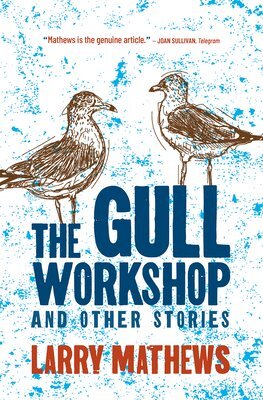
In The Gull Workshop, his second collection of short fiction, Harry Mathews offers up thirteen fiendishly inventive stories brimming with irreverence and comic energy. Mathews generally sets these tales of modern angst in a here-and-now that closely resembles the world as we know it, but often with a playful twist of weirdness that can catch the reader off guard or leave his characters scratching their head. A prime example is the title story, in which a small group of older men from the community have signed up for a “Gull Workshop,” even though they don’t know what it entails and are none the wiser after a lengthy discussion with their enigmatic facilitator on precisely that question. In “The Death of Arthur Rimbaud,” the renown French poet has without explanation turned up in a small community in rural Canada, where he’s renting a house and living on his own. The narrator reports this in breezy, matter-of-fact terms, even though some of the details, as he readily admits—such as Rimbaud’s birth date of 1854 making him over 150 years old—are “hard to swallow.” Other stories tackle obsessive behaviours. In “Brick,” Vince and Isabel (“Canadian snowbirds”) regularly winter in Florida, and all is going well until one morning Vince discovers a patio brick out of alignment at the edge of the property, repositioned in a way that can only mean one thing: human intervention. Over subsequent days and weeks, as the same brick is repeatedly tampered with, Vince engages in a battle of wills with his unseen tormentor. But Mathews is wily, and just when we think we’re reading a story about a man spiralling into madness over a triviality, he broadens the scope of the narrative to plausibly include a shooting at the airport in Fort Lauderdale and Vince’s Christian beliefs. Other stories take a sardonic perspective on family tensions (“Brother,” “Garabandal”) and knotty male-female relationships (“The Apocalypse Theme Park,” “What My Wife Says”). The collection ends with three delightfully ironic linked stories that skewer academia, among other things, in which our hapless hero, Hanrahan, confronts his intellectual limitations and lack of ambition while searching for a career and something that resembles meaning amidst life’s random chaos. Anyone who’s tried it knows that comic writing is much more difficult than writing for dramatic effect. Mathews carries it off with grace and confidence, seemingly without effort, again and again. And yet, he never seems to be showing off. The Gull Workshop—wise, insightful, wryly observant regarding humanity’s copious foibles and infinite capacity for misunderstanding—is classic Harry Mathews.

The characters in Anne Baldo’s captivating debut story collection, Morse Code for Romantics, are searching for connection, hoping for love, or even just a little human warmth, amidst the lonely tedium of aimless days and anxious nights. Many of Baldo’s characters are young and aware of a world of promise and opportunity that awaits them, but are unsure how to reach that world and attain that promise, or else they’re indifferent to its existence. Baldo sets her stories in a distinctly unpromising landscape: a desolate and backward version of small-town southern Ontario, a place scarred by neglect where rust and rot spread unhindered, where gardens are left to become tangled and chaotic. “We lived on a dead-end street,” Ophelia observes in “The Way to the Stars,” a statement that succinctly sums up the lives of many of the people we meet in these stories. Ophelia loves Tamás, but Tamás loves Molly. He has time for Ophelia too, but only after a bust-up with Molly, who, he knows, will always come back to him. “I existed for him in the voids between,” Ophelia reflects despairingly, “and what exists in voids is nothing.” The title story takes place at a wedding. Trevor and Livvy are tying the knot and Jordan, who narrates, slowly reveals why the mood is anything but celebratory: this is not a happy event but instead a forced union between two very young people who made a life-altering mistake. Baldo’s stories generate a strong sense of time passing, of opportunity slipping away, and are often steeped in melancholy. Lucy, in “Last Summer,” spends her break from university with friends Sadie and Rhea and boyfriend Arthur, binge drinking, drifting from party to party, from one encounter to the next, obsessed with cheap jewelry, lip gloss, nail polish and Everett, with whom she’s infatuated. Lucy's is a life of inconsequential distraction, but Anne Baldo’s prose digs beneath the veneer to reveal unexpected complexity in her characters’ yearnings and regrets. Baldo’s families are invariably broken, often beyond repair. Young Colt, in “Fish Dust,” is terrified of—and fascinated by—his estranged father and rough half-brothers. Jumping at a chance to go fishing with them, the experience teaches him what his mother already knows, that his father is a man who leaves only destruction and sorrow in his wake. And in “Wishers,” Demetria is searching for her lost daughter. Cora, a university student, has fallen under the sway of an older man, Hayes, a black-sheep son of privilege, and an addict. When she finally tracks the pair down at a fleabag motel, she is unable to persuade Cora to leave Hayes and so finds a way to make generosity her revenge. Throughout Morse Code for Romantics, Baldo’s prose shines. Her writing effectively evokes a world that is familiar and strange at the same time, pulling the reader into lives scarred by loss and loneliness. These are poignant, wise, memorable stories by a writer whose vision may be bleak, but it’s a vision that rings true on every page.
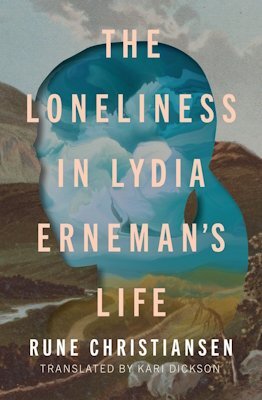
Rune Christiansen’s prize-winning novel (capably translated from the Norwegian by Kari Dickson) is a paean to solitude which suggests that, while loneliness might be widely regarded as an unfortunate aspect of the human condition, it can also be a choice, one that does not have to be sad or tragic. Lydia Erneman grows up in Northern Sweden, an only child living in intimate proximity to the natural world. Her parents provide for her physical and emotional needs, but even as a child she senses that their marriage is “a form of coexistence” sustained and strengthened by “distance,” “detachment” and “absence.” Lydia matures into a dual awareness, of her connectedness to all things and the separateness that enables her to objectively observe what goes on around her. Above all else, her childhood teaches her how to be alone. After graduation she becomes a veterinarian and takes a position in rural Norway. At this point her life becomes busy and purposeful. The hands-on nature of her veterinary practice suits her. The work is fulfilling and seems to satisfy her professionally and emotionally. Believing she is content in her solitude, she neither craves nor seeks human contact beyond professional colleagues and the farmers whose animals she treats. But Christiansen’s quietly powerful narrative demonstrates how events can propel us in unexpected directions, subverting our intentions and landing us in the midst of friendships and attachments we never saw coming. Subtly, inevitably, Christiansen draws us into Lydia’s apparently uneventful life in the manner of a film that ticks along scene by scene, building tension on the sly, as if behind the viewer’s back, until before we know it, we can’t pull our eyes away from the screen. Lydia’s emotional growth occurs while we’re distracted by Christiansen’s contemplative, melancholic prose, which evokes a Nordic landscape of fading light and muted passions. Lydia Erneman’s thoroughly unremarkable days encompass achievement and disappointment, love and loss, serenity and frustration, confusion and certainty. The events that occur in these pages rarely rise above the commonplace. But as we read, Lydia’s story gradually becomes riveting, and we emerge from it with a sense that life lived unobtrusively and on a small scale can be meaningful, impactful, joyous and profoundly worthwhile. The Loneliness in Lydia Erneman’s Life is a triumph of bare-bones, understated storytelling that celebrates the rhythms of ordinary life, those precious moments we spend recalling a childhood memory, listening to the wind in the trees, or sharing a cup of tea with a friend. This is a novel that transcends the quotidian lives depicted in its pages. Haunting, captivating, uplifting.
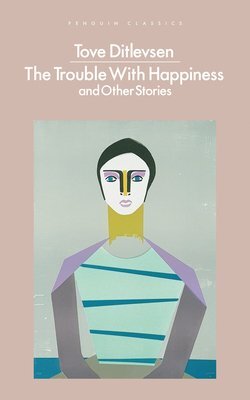
Tove Ditlevsen’s bleak, emotionally disturbing stories zero in on moments of excruciating tension and vulnerability in the lives of ordinary people. The preponderance of Ditlevsen’s subject matter derives from the push-pull of domestic relationships, the power struggle of the male-female dynamic after long periods of co-habitation, or the breakdown of a connection that one presumes was at one time affectionate. In “The Umbrella,” Helga’s husband, resentful of her delight over acquiring a new umbrella, destroys the instrument as she looks on, an act that, in the bitter aftermath, Helga calmly accepts as she reflects that “everything was the way it was supposed to be.” “The Cat” relates a fraught tale of a couple who come into conflict when a stray cat joins the household, upsetting the domestic power balance and giving the wife the upper hand. “A Fine Business” describes a pregnant couple’s viewing of a house they want to buy, and the young mother-to-be’s guilt and sadness when her husband joins forces with the real estate agent to negotiate the price down, exploiting the female seller’s desperate need. In “Two Women” Britta, suffering from a case of frayed nerves brought on by her overbearing husband’s criticisms, seeks to restore her equilibrium at the beauty parlour. But when she sees the young hairdresser is upset, and then pries an admission from the girl that her husband has left her, Britta is not sympathetic but instead resentful that she must now share someone else’s burden of misery. In most of these stories it is the female partner who must cope with a moody, domineering husband. But in “The Trouble with Happiness,” it is the wife/mother’s judgmental presence that sets a tone of powerful negativity in the domestic setting, cancelling out all lightness and joy. Her husband copes by retreating, becoming a passive nonentity in his own home, and the daughter, who narrates, is counting down the days until her eighteenth birthday, when she will be free to live wherever and with whomever she wants. Conflict in Ditlevsen’s fiction sometimes arises suddenly and can be unexpected and unintentional. A mistimed smile or sidelong glance, or a casual remark, seems hurtful to the person on the receiving end, who then begins to see the other person differently. But more often than not she writes of people who have grown weary of each other and situations where love has withered and the relationship endures more because of inertia than anything else. Not for all tastes, but Tove Ditlevsen’s stories and novels, reminiscent of the work of British author Anna Kavan, deserve a place in any discussion of psychological realism in 20th-century European literature.
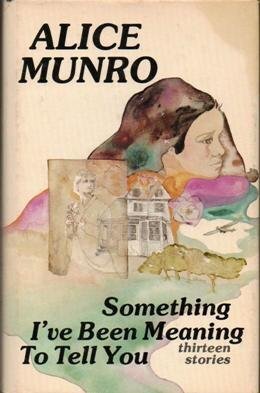
In Something I’ve Been Meaning to Tell You, her masterful second collection of short fiction published in 1974 (Lives of Girls and Women is widely considered a novel), Alice Munro’s art takes a significant step forward. Though the subject matter remains much the same as in her first two books (stories of quotidian lives mainly told from female perspectives), in these stories she is extending her reach and experimenting with voice and form, light and dark. Many of the stories are built around memory and are often filled with expressions of disappointment, grief, regret, sometimes bewilderment, occasionally satisfaction with how things have turned out. In the breathtaking title story, Et is recalling her beautiful, impulsive, temperamental older sister Char. The sisters grow up, a tight-knit pair, in small-town Ontario, Char much more dramatic and worldly than her sister, and the more adventurous when it comes to love. Char’s early beau is Blaikie, whose family owns the local hotel and spends the off-season in California. When Blaikie marries someone else, Char takes poison. It’s Et who saves her. Later Char marries Arthur—a teacher, an unexceptional man—and lives an ordinary life. But the poison episode remains with Et, who one day makes a startling discovery in Char’s kitchen, which leaves her forever wondering what her sister might have been capable of. “How I Met My Husband” is narrated by Edie, who is recalling when she was fifteen and working as housekeeper for the Peebles, Dr. and Mrs., and their two small children. Though not farmers, the Peebles live in farming country, five miles outside of town. One day a small plane lands in the empty field across the road from the Peebles’ house. It turns out the pilot, Chris Watters, is touring his plane from town to town, and for a small fee will take people up to enjoy the view. By happenstance, Edie strikes up a casual friendship with Chris, which quickly becomes physical, and soon Edie’s head is filled with all kinds of romantic notions. When Chris moves on, leaving behind Edie’s broken heart and an empty promise to write to her, Edie’s life takes a turn she never saw coming. And “Executioners” is narrated by Helena, whose father is a drunk and whose inattentive mother nurses her grudges lovingly. Helena is tormented by her peers, ridiculed because of her odd clothing and her father’s dissipation. But Helena is a curious and generous child who, through an act of kindness, comes to the attention of Howard Troy, the shiftless son of the town bootlegger, Stump Troy. Howard starts bullying her, for no better reason than that “he may have seen the glimmer of a novel, interesting, surprising weakness.” The story turns on the family of Robina, Helena’s mother’s housekeeper, whose younger brothers are enemies of Stump Troy. In the story’s principal scene, Helena and Robina stand among the curious onlookers witnessing the fire that one night consumes the Troy family home. The event is tragic, but Helena views the spectacle coolly, reporting it in clinical terms, hinting but never overtly suggesting who might be responsible. Throughout, Munro’s prose is flawless: precise, understated, rarely drawing attention to itself, but shining nonetheless, evoking character and setting in painterly fashion: “Her tall flat body seemed to loosen, to swing like a door on its hinges, controlled, but dangerous if you got in the way.” In Something I’ve Been Meaning to Tell You people are often mysterious to each other (and sometimes to themselves), their actions troubling, their motives opaque. Munro’s narrators spend a good deal of time and mental effort wondering how and why they do the things they do. Munro seizes on this aspect of daily life and turns it into a major building block of her fiction. The result is a collection of poignant, thoughtful, loosely structured dramas that eloquently explore what it means to be human. Essential, vintage Alice Munro.

Leo McKay is no stranger to addressing explosive themes in fiction. His prize-winning novel Twenty-Six, published in 2003, is a riveting account of the Westray Mine disaster from the perspective of the family of one of the dead miners as well as a searing indictment of corporate greed. In What Comes Echoing Back, McKay tackles the impact of social media on communities and individual lives. In a narrative that crosses several timelines, McKay’s novel focuses on two teens who have seen their lives turned upside down after their images were posted online without their consent. Patricia’s experience is one we’ve seen lead to tragedy far too often. After reluctantly attending a drinking party with two friends, she wakes up groggy and hungover to learn she’s been drugged and sexually assaulted and that a video of the event is going viral on the internet. To make matters worse, a friend who was also assaulted at the party later commits suicide. Soon Patricia finds herself the unwilling centre of attention in a small rural town in Nova Scotia’s Annapolis Valley where everyone knows everyone else’s business. Unable to cope with the humiliation, reeling from grief, feelings of self-blame and an overwhelming sense of worthlessness, Patricia goes to live with her Uncle Ray in Hubtown, where, seeking anonymity, she changes her name to Sam, keeps her head down and hopes nobody who saw the video recognizes her. Robert (nicknamed Robot), son of an alcoholic mother, is a talented guitarist whose life revolves around music. He’s also physically imposing—a trait he attempts to downplay with a low-key, self-effacing manner—but which attracts attention nonetheless. As the novel begins, Robert has just been released from prison after serving a year for killing another student in a fight. The killing was unintentional. In fact, Robert hardly knew the other boy and had no issue with him. But the fight was encouraged and staged by two students looking to gain notoriety by urging people into violent confrontations and posting the fight videos on their social media channel. Robert and Sam meet in music class and form a bond that grows out of their status as social outcasts. McKay’s novel describes Sam’s and Robert’s halting efforts to re-integrate themselves back into a society they are not sure wants anything to do with them while shielding themselves from further pain. In a series of moving scenes drawn with great compassion, we witness their first tentative steps toward one another, watch them overcome their doubts, and see how their mutual trust grows over time, bolstered and sustained by the healing power of music. At its core, What Comes Echoing Back tells a relatively straightforward tale of two damaged, vulnerable people struggling to build a connection following life-altering trauma. It leaves us wondering not only where their lives will take them next, but also questioning the forces at work in a world that seems to offer no defense against the malicious exploitation of technology that has the power to destroy innocent lives with a keystroke. A note of caution: it’s possible the depictions of violence and alcohol addiction in this novel could be triggering for some readers. Rest assured that Leo McKay’s treatment of this difficult material is unfailingly engaging and honest.
January 8, 2024
The Confessions of Joseph Blanchard: 25-years to the Guernica Prize
I started writing the novel that became The Confessions of Joseph Blanchard in 1994. I had been writing fiction “seriously” for about a decade and had met with some success placing short stories in literary journals. I was working at the Dalhousie University Libraries and was eligible for a half-sabbatical leave. My sabbatical project was an academic paper on “digital writing.” It will seem quaint from our vantage point in the tech-saturated 2020s, but in the early 1990s widespread use of computers for writing and communication was in its infancy, and I was keen to explore the effects of the new digital tools on the act of writing.
I also had an idea for a novel and thought I could make use of the time when I wasn’t working on my official project to get started on that.
Admittedly, I was more committed to creative than academic writing. Before my sabbatical started I convinced the chair of the English Department to let me move into a vacant office. I told him that, if he had no objection, I could meet with students to discuss their own creative writing efforts. Word went out that I would be in the department for the first six months of 1994 and was available to discuss creative writing with students who found the topic of interest. I would be an informal “writer in residence.”
For the next six months, with my time and energies divided, I managed to write the first 50 pages of the novel, along with 100 pages of a text that was eventually published as a stand-alone monograph by the university.
Ⴔ
Joseph had come to me fully formed: a fastidious man in his late thirties, bored with his life, who falls in love with his much younger cousin. Fiction writers know what it’s like when an imaginary character intrudes into your daily routine. Everything you do and say is coloured by a foreign perspective. Your thoughts are not entirely your own. Your observations are no longer simply things that pass before your eyes, they are potential fodder for the story you’re writing. As you work, the story becomes an obsession, and if you’re not careful it can push real life into the background. Regardless how you deal with it, you cannot help but become slightly unhinged because you’re trying to live normally under abnormal conditions.
Of course, none of this matters if the work is going well.
Ⴔ
The sabbatical ended and over the next four years, while I was busy doing other things (working full time, editing a literary journal, helping to organize a reading series), I completed a first draft of the novel, which I called “Sophie’s Blood.” I read it over and was happy with it. And I was encouraged because I had workshopped portions of the manuscript at the Maritime Writers’ Workshop and received positive feedback.
The next step was to explore publication opportunities. It seems hard to believe now, but in 1998 large commercial publishers would take submissions straight from authors, even obscure authors like me with a sparse track record and virtually no public profile. Since there was nothing to stop me setting my sights on the biggies—Knopf, Random House, Harper Collins, M&S—I started with them.
In those days submitting a manuscript to a publisher meant printing a copy and sending it by parcel post, not an inexpensive proposition even 25 years ago. Over the next couple of years, I burned through more than a few boxes of printer paper, probably a dozen toner cartridges and hundreds of dollars in postage before deciding to take a step back to re-examine my options.
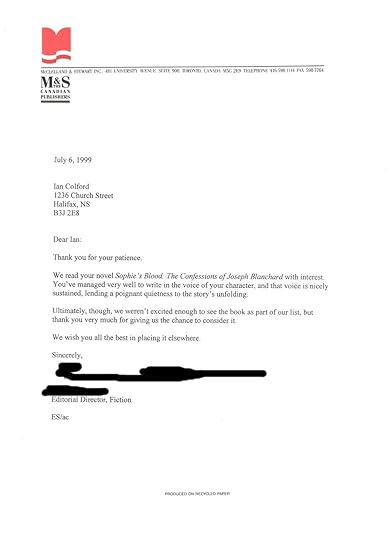
Ask anyone about the submission process and they’ll tell you many things, but they’ll tell you this for sure: it’s slow, frustrating, and the only certainty is rejection. I’ve written about this previously. Some publishers respond promptly. Others take their time. Some don’t reply at all. The level of detail in these responses varies greatly. The responses I received ranged from bluntly dismissive to gushingly complimentary. A couple of publishers apparently gave my submission serious consideration, admitting that it had come close to being accepted. One wrote back after more than a year apologizing for keeping the manuscript for such a long time, but “everyone in the office wanted to read it.”
By early 2001, however, nearly three years after finishing it, Sophie’s Blood remained unpublished. Clearly, I was doing something wrong.
Ⴔ
I reread the manuscript, which I hadn’t done in some time. Typos leapt out from almost every page. Everywhere I found clumsy syntax and passages flaunting their redundancy, begging to be cut. It was flabby and self-indulgent. I had sent the manuscript out too soon. It needed a workover. I contacted a writer friend and asked him to read it with an eye to tightening the narrative. Two or three months later I received Richard’s comments. His suggestions, if I followed through on them, would shorten the manuscript by a quarter, or about 100 pages.
I made the changes.
Now I was facing a new set of questions, the first of which was Is this manuscript really any good? It had been rejected at least 20 times. Richard had said it was okay but needed work. Well, I’d done the work.
I’m a member of the Writers’ Federation of Nova Scotia. I’ve served on their board, helped judge their contests. The Fed runs an annual competition for unpublished manuscripts. These days it’s known as Nova Writes. In 2001 it was called The Atlantic Writing Competition. I decided to enter Sophie’s Blood in the competition to see what would happen. One of the perks of paying the entry fee was that contestants received written comments from the jury, which was normally made up of people with a strong interest in books and storytelling: writers, librarians, booksellers, etc. I figured at the very least I’d have a few words from seasoned readers to guide my next set of revisions.
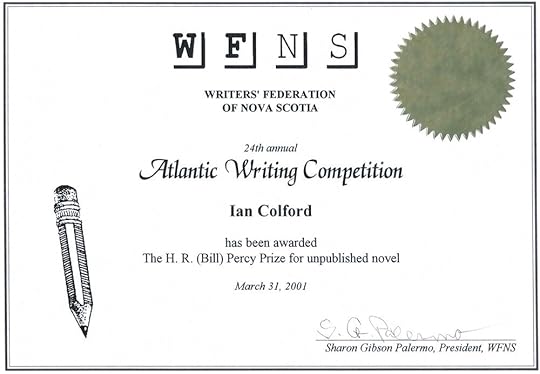
Sophie’s Blood won first prize in the novel category.
Maybe I was doing something right after all.
Ⴔ
I continued to submit the manuscript to publishers without success.
In 2003 a literary agent I was corresponding with pointed out that the movie Sophie’s Choice had made a major splash and a novel called Sophie’s World had been a global bestseller. Her point was that to avoid confusion I should either rename my character or find a better title. That’s how my novel became The Confessions of Joseph Blanchard. Years later another agent sent the manuscript to a few publishers and noticed the comments they were making often repeated a similar sentiment, that Sophie’s character was sketchy and lacked definition. She suggested I make some revisions, maybe even write a new scene or two that would help solidify Sophie in the reader’s mind. I made these changes in 2018.
By 2020 the Covid-19 pandemic was in full swing, and we were all staying home. Late in the year I suddenly found myself without an agent. I had an inventory of four unpublished manuscripts, two novels and two collections of short fiction. I reread everything, including the Confessions manuscript. It was the same narrative it had always been, the one in which Joseph Blanchard, writing in 1971, describes his role in a series of devastating, life-changing events. But while reading, I could see that the passage of almost 25 years had altered the reader’s relationship to the action. The historical perspective had shifted. The story was set fifty years in the past: a lifetime ago. It needed something to reset the balance. I hit upon the idea of a letter that would bring the novel into the contemporary moment by signalling to the reader that the story is taken from an old manuscript discovered in the home of a woman who had recently died. This letter is transcribed in the book’s the opening pages.
Ⴔ
Stuck in the house and with the option of making submissions via the internet, I submitted all my manuscripts. When the rejections arrived, I submitted them again. Sometimes I didn’t even wait for the rejections to arrive. Eventually the calendar flipped to 2022 and I decided to enter The Confessions of Joseph Blanchard in the Guernica Prize competition. Here was another chance to put the work in front of readers who would not be constrained by the business side of publishing, whose chief concern was not marketing strategies or sales figures. They would simply read the novel and decide if it passed muster.
To say I was delighted to learn that The Confessions of Joseph Blanchard was selected for the Guernica Prize shortlist, and then named the winner, is an understatement. The news marked the end of a journey that was half-way through its third decade. I had long since lost count of the number of people who had read the manuscript in its various forms. But I am grateful to every one of them, especially those who went to the effort to tell me where I had gone wrong and what I could do about it. Over the years I had plenty of time to imagine what the finished product might look like, and I’m more than pleased with how it’s turned out. David Moratto’s design is outstanding, editor Lindsay Brown has done a superb job, and the whole team at Guernica Editions has been more than supportive.
I could have given up long ago, but in 1998 I believed I had written a novel that people would enjoy reading, and I still believe that. I’m glad now that readers will have a chance to decide for themselves.
Ⴔ
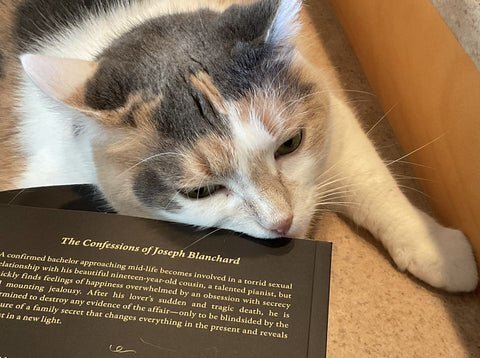
Ⴔ
April 6, 2023
Best Reads of 2022
In 2022, as in years past, I read a mix of new and older titles, a hodgepodge of genres, books written in a variety of styles. Dystopian fantasy, horror, historical, suspense, mystery-detective, literary fiction … All are represented to varying degrees in the 51 titles I read in 2022.
I’m drawn to psychological realism: novels and collections of short fiction that illuminate the human condition in the modern and contemporary world. Most of the fiction I read is character-based, meaning the author is writing about people whose world closely resembles our own and relying less on sudden or outlandish plot twists and more on psychological depth and character development to move the story forward. In this kind of fiction, story and character are on a more or less equal footing because story arises from character. The author knows that both elements must thoroughly engage the reader to keep him turning the pages. And for the most part, the books I read do this. The books included here do this very well indeed.
I’ve harped on this before, but it bears repeating. We write fiction because we’re curious about human behaviour and motivation. We read fiction for diversion, for entertainment, to go places we might never visit and experience life from a perspective that is not our own. But we turn the pages to find out what happens next. The books listed below provide plenty of reasons to keep turning the pages.
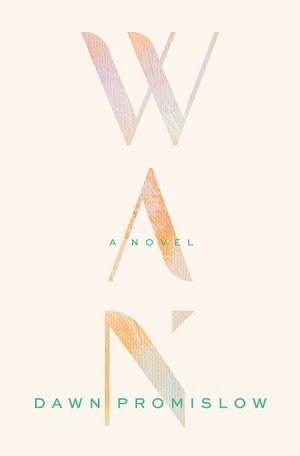
Dawn Promislow’s slow burning novel, Wan, takes the reader back to apartheid-era South Africa. It is 1972. Jacqueline, an artist—a painter—is a white woman living a comfortable life in suburban Johannesburg with her husband, Howard, a partner in a law firm dealing primarily in corporate law. Jacqueline and Howard have two children, Helena and Stephen. They employ three black workers to perform the household chores. The family is privileged and prosperous. Jacqueline and Howard are also painfully aware that South Africa’s social structure is based on a grotesque injustice, and despite living under a system that favours them because of their skin colour, their political sympathies are emphatically at odds with the country’s authoritarian ruling party. But other than treating their hired help well, there is little they can do. The penalty for dissent is severe, and with government informants everywhere, speaking out will only make them targets for the police. So, like many white South Africans who opposed apartheid, they resist in silence and keep their moral objections to themselves. Then, early in the novel, they are presented with an opportunity to aid the cause in a real way. Howard’s law partner, who has contacts within the ANC (African National Congress), needs to safeguard an anti-apartheid activist who is wanted by police and asks Jacqueline and Howard to provide the man with temporary sanctuary. Joseph Weiss moves into a small building at the rear of their property that they’d been using to store household odds and ends, and in so doing sets off a chain of events that ultimately renders Jacqueline and Howard’s life in South Africa untenable. Fifty years later, Jacqueline, widowed and living in New York, unburdens herself, narrating an account of those months of Joseph’s tenancy, telling us, “I’m too old to hold on to this story any more. So I’m going to tell it to you.” Wan recounts an exquisitely suspenseful tale of searing guilt, moral ambivalence, misplaced trust, and heart-rending honesty. Promislow relates Jacqueline’s story in crystalline prose, using a contemplative voice tinged with weary resignation that pulls the reader in and doesn’t let go until the final pages. Promislow is patient and thoughtful, and she expects the same of her reader. The story is deliberately paced. Details and events accumulate gradually, ramping up the stakes and building tension to an excruciating level. The book provides a quick, compulsive read, but the rewards of this vividly imagined, elegantly crafted novel are many. With Wan, Dawn Promislow establishes herself as a bracing, shining talent. Readers of this, her second book and first novel, will be eagerly anticipating her next.
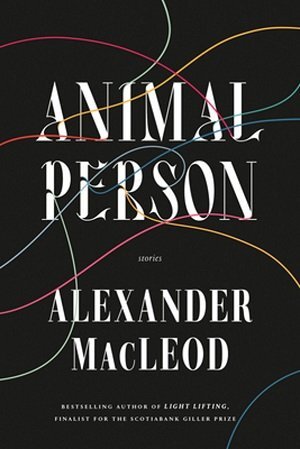
The connections that bind people together, that shape destinies and affect lives for good or ill in the contemporary world, is fertile terrain that Alexander MacLeod explores in his second collection of short fiction. These eight elegantly written stories bring searing focus to human relationships tested by unforeseen circumstance. MacLeod’s characters are distant relatives, husbands and wives, mothers and fathers, lovers, neighbours and strangers who have ventured or been drawn into situations that threaten or challenge something they hold dear. David, the narrator of “Lagomorph”—father of three grown children and separated from his wife, Sarah—is living by himself in the family home with Gunther, the pet rabbit. What blew the marriage apart? “I think we just wore down,” he explains in blasé terms, “and eventually, we both decided we’d had enough and it was time to move on.” The separation is amicable. But David, alone and adrift, finds his life profoundly altered. Almost inevitably his days revolve around the aging rabbit, Gunther, who is his anchor to the past and his fragile bridge to the future. David claims that all is well, that he’s adjusting. But when a crisis occurs—one that places Gunther’s life in danger—his fear is existential. In “The Dead Want,” the tragic death of his 20-year-old cousin Beatrice brings Joe’s family back to Nova Scotia for the funeral, where, finding the place and the people different from how he remembers them, he is emboldened to act out the changes he sees in himself. In “The Ninth Concession,” which is set in Ontario farming country, the young narrator’s long-time friendship with Allan, the son of his well-off neighbours, the Klassens, abruptly ends after a disturbing, late-night encounter. “Once Removed” tells the story of Amy and Matt, who are manipulated into visiting Matt’s great aunt. But the old lady’s true motive for issuing the invitation doesn’t become clear until after they arrive at her apartment. And the collection’s final gripping story, “The Closing Date,” told in retrospect a few years after the event, describes the eerie close encounter between a young family and a murderer on the day the couple are set to close the deal on their new house. Throughout, the narrative tone is contemplative and unhurried. MacLeod writes with unfailing ease and confidence; his uncluttered prose sparkles, seducing the reader with natural, plain-spoken rhythms, while the stories themselves enthrall. The seeming effortlessness with which these tales of modern angst are composed is deceptive: a true artist in total control of his craft, MacLeod keeps the nuts and bolts—the sweat and agony--of the creative process well hidden from view. The collection sets its sights on the anxieties that plague everyone living in this fraught modern world, the myriad dilemmas, large and small, with which we grapple on a daily basis. Moving and memorable, Animal Person confirms in triumphant fashion Alexander MacLeod’s reputation as an author of bold, ingenious short fiction.
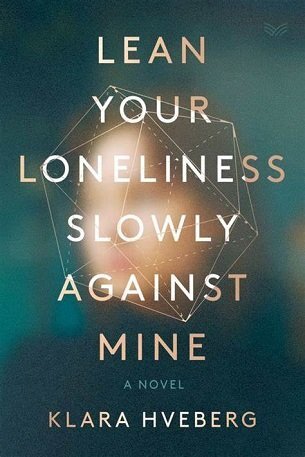
Klara Hveberg’s stunning debut novel reaches to the core of what it means to be human and vulnerable. Rakel is an only child, the prodigiously gifted daughter of a Norwegian father and Asian mother. She grows up in a small town, raised in an intellectually vibrant household immersed in art, music and literature. Not surprisingly, with her intellect setting her apart from her peers, she is often lonely and has difficulty making friends. As she matures, a passion for numbers and patterns emerges, which after high school motivates her to pursue a career in mathematics. She moves to Oslo to attend university, and there meets Professor Jakob Krogstad. The two develop a profound camaraderie, talking puzzles and problems. But it is at the primal level, when in Jakob’s presence, that Rakel is left aroused and breathless. In a short time—even though Jakob is more than 20 years her senior and a husband and father—Rakel and Jakob become lovers. In conversation, Jakob compares Rakel to the 19th-century Russian mathematician Sofia Kovalevskaya, a young genius who also had an affair with an older male mentor, and reveals he is planning to write a novel about Sofia’s life. Sofia becomes an object of Rakel’s curiosity, a constant presence in her thoughts, and she muses over a period of Sofia’s life when she seemed to renounce mathematics. At about the novel’s mid-point, with Rakel’s studies advancing and her accomplishments mounting, she is stricken with a baffling illness that saps her strength and renders her unable to work. At the same time, she wants Jakob to commit to their relationship, which he has promised to do when his daughters are old enough to accept his choice and live their lives without him. But this is not to be, and when Jakob chooses his wife Lea over her, Rakel is devastated. In the end, Rakel, now in her thirties and suffering debilitating symptoms, retreats from university life, returns to the small town of her youth and surrenders herself to the care of her parents. Hveberg’s novel, arresting, engaging, thought-provoking, is a cerebral exercise. And yet it is also a deeply touching inquiry into the nature of love and the spiritual connections that can arise between human beings. Permeated by melancholy and a sense of loss, Rakel’s story ebbs and flows like a body of water. Rakel, swept along by the current, subject to physical forces beyond her control, lives a life of the mind but is continually at the mercy of her heart, which yearns for the very things it cannot have. Impeccably translated from the Norwegian by Alison McCullough, this is beautiful writing that takes the reader on a surprising and unforgettable journey. Gripping and poignant, Lean Your Loneliness Slowly Against Mine engages the mind and the spirit like a great piece of music: harmonious, eloquent, haunting.
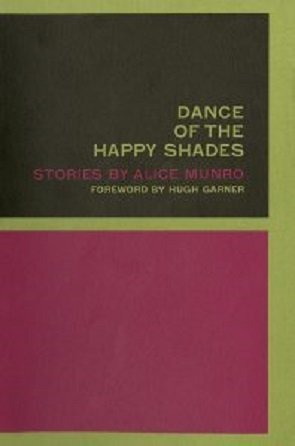
Alice Munro’s first collection of short stories is not simply a landmark work of Canadian fiction—it is a significant contribution to fiction written in English. These early stories are steeped in a glow of nostalgia and often turn their focus to young people yearning for independence and chafing against the role that society has assigned them. Also featured prominently are strained or lost emotional connections and diverging generational attitudes toward life and love. The settings are rural and small-town southwestern Ontario in the early to middle decades of the 20th century, a time of evolving lifestyles and hardscrabble self-sufficiency. A number of stories are narrated by children and depict their wonder and apprehension as they come face to face with a confusing but enthralling adult world. In “Walker Brothers Cowboy,” the young narrator and her younger brother go for a drive into the country with their father, a traveling salesman. Eventually they end up at a house where they meet a woman, Nora, whom, the narrator gradually realizes, is her father’s old sweetheart, and the shock of this hidden dimension of her father’s past thus revealed unveils to her the world as a place of depth and nuance that “darkens and turns strange” the moment you turn your back on it. Other stories place young women in awkward or oppressive social situations resulting from clashing attitudes toward gender roles. In “The Shining Houses,” a young mother, Mary, lives in a growing neighbourhood of newly constructed dwellings mingled in with the old. Mary admires her neighbour, Mrs. Fullerton, a resident of long standing, a cantankerous but strong-willed, independent woman who keeps chickens and sells eggs. Later, at a children’s birthday party that Mary attends with other young mothers like herself along with their young husbands, the conversation turns to a general disgust with Mrs. Fullerton’s “rundown” property and a plan to use a city ordinance to have her evicted. When Mary is asked to sign a petition she refuses, but her confusion is profound, and she leaves the party haunted by what she’s done to herself by resisting a notion that to her seems reprehensible but to others seems righteous and necessary. And in “The Office” a young mother, an aspiring fiction writer, bravely defies social and domestic norms by renting office space where she can work in peace, free of family distractions. But, to her chagrin, her concentration is disturbed, maddeningly and repeatedly, by her condescending and meddling landlord, who refuses to treat her and her artistic goals seriously. The stories are bracingly open-ended and, in their structural elasticity, imply endless vistas of narrative possibility. Throughout, Munro’s prose is precise and controlled and crowded with sensory detail. Her settings live and breathe: the natural world shimmers and pulsates; every texture, every sight, sound and smell of every interior space is rendered with stunning physicality that haunts the reader’s imagination like a lived memory. A virtuoso performance, The Dance of the Happy Shades received widespread acclaim when it was published in 1968 when the author was 37. A must-read for fans of the short story, this book also belongs on the reading list of every student of 20th-Century fiction.
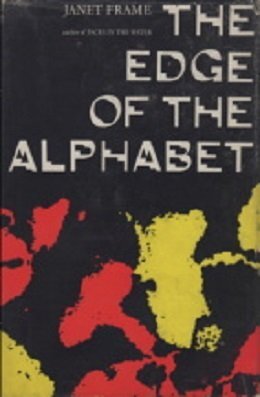
Published in 1962, Janet Frame’s extraordinary third novel chronicles the adventures of three people living “on the edge of the alphabet”: a desolate outpost of the soul where feelings of worthlessness and crushing loneliness cannot be expressed. New Zealander Toby Withers, an epileptic, suffers as well from an acute form of social awkwardness that leaves him isolated and fretful. Zoe Bryce, a depressed middle-aged spinster from England, has left her position as a schoolteacher in humiliation after developing amorous feelings for a colleague that were not reciprocated. And boastful know-it-all Pat Keenan, an Irishman, lives an exceedingly prosaic life in London, where he drives a bus. The three cross paths on a passenger ship traveling from New Zealand to London. After the death of his supportive mother, and in defiance of his pragmatic father, Toby has decided to exert his independence, strike out on his own and see the world. He is also smarting after being rejected by a young woman whom he was convinced loved him because she tolerated his company and was on occasion nice to him. Zoe’s “working vacation” in NZ is over, and she is returning to England to face an uncertain future. And Pat is returning home as well after time off from his job. On board the ship, each traveling alone, Toby, Zoe and Pat form a loosely compatible trio, and in London their connection endures even as their quiet desperation intensifies. Pat returns to his squalid rooming house, where he has convinced Zoe that she should live as well, while Toby finds cramped, disagreeable quarters elsewhere. To support themselves, Zoe and Toby take menial, unfulfilling employment. For a time, Toby, Zoe and Pat are able to sustain themselves on their delusions. Toby, though largely unschooled and barely literate, has convinced himself that he will someday write a novel about “The Lost Tribe,” a notion, encouraged by his mother but dismissed as ridiculous by his father, that he guards closely and that has occupied him for years. Zoe, having been kissed on board the ship by a drunken sailor (the first kiss of her life), clings to the hope that love is not completely out of reach. And Pat makes his unexceptional life tolerable by puffing himself up with self-important claims, habitually exaggerating his accomplishments, offering unsolicited advice, and pushing people around, especially those, such as Zoe, who lack confidence and will be overwhelmed by his persistence. Eventually, however, each is compelled to give up on their dreams, with consequences that range from unfortunate to disastrous. The novel’s loose structure and Frame’s reliance on distorted interior monologue contribute a hazy, dreamlike quality to the action, which drifts from one event or encounter to the next. Throughout, Frame’s magical, often disorienting language leaps from the page: “But it is people, their shape, their presence, that are bulwark, bung-hole, asbestos wall. For the wind blows from fire, as well as from ice.” Impressionistic, sometimes bizarre, but bracingly original, The Edge of the Alphabet is also a compassionate and moving novel, one that confronts an age-old and tragic human enigma: that loneliness and its devastating effects can persist in a world filled with people searching for connection.
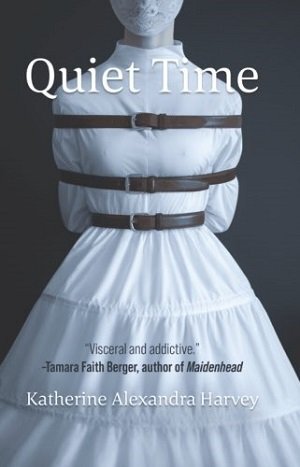
In Quiet Time, Grace is growing up in rural, coastal Newfoundland with two siblings and a pair of self-absorbed, artist parents. Grace’s father is a writer who warns the children not to bother him when he’s working, and for good measure has placed a creepy mask on his office door. Grace’s mother, a painter and sculptor, often goes missing, abandoning the family and staying absent for days or weeks at a time. Grace, preternaturally observant, is also a creative spirit who wants to be a writer, though she gets little encouragement at home and, after confiding in her English teacher and seeking his praise and approval, finds herself in a sexually abusive relationship. Katherine Alexandra Harvey’s debut novel chronicles Grace’s descent into addiction and mental distress, and her eventual recovery. At the age of seventeen, she meets Jack, a painter and friend of her mother. Jack also sells weed and consumes a variety of addictive substances, to which he introduces Grace. Grace, craving attention, falls in love with Jack, and over the course of their volatile, years-long relationship, becomes addicted to opiates and booze. Their lust- and drug-fueled partnership reaches its climax when Grace delivers a stillborn son. And it’s not long before Grace has attained new depths of despondency, resumes cutting herself and survives a suicide attempt. By this time Jack, whose painting career is flourishing, has left Grace for another woman. Harvey’s novel is unsparing and uncompromising and the story it tells is bleak. But Grace, alone with her grief and hitting bottom, somehow summons the strength to seek treatment and get herself admitted to hospital, pulling herself back from the brink just in time. Quiet Time, Harvey’s debut novel--difficult, disturbing, sometimes deeply unpleasant but always psychologically convincing--is also a strangely uplifting and triumphant work of gritty realism. With this novel, Katherine Alexandra Harvey announces herself as a fearless talent worth watching.
March 26, 2022
Best Reads of 2021
We have successfully passed through a strange and stressful year. But now we seem to be embarked on an even stranger one that promises even greater stress. Around the world, tensions are high. Covid is not done with us, not by a long shot. Supply lines are fractured. The price of everything is out of control.
Not much is certain. But one thing that is certain: books provide solace and distraction. So let’s keep reading!
My own reading in 2021 included the usual mix of titles new and old, prize winners and writers from the literary fringe, authors in translation, short story collections and novels ... an eclectic assortment, selected without plan, rhyme or reason. In other words, books that reflect my individual and admittedly peculiar tastes.
As always, I’m looking for interesting, memorable characters, fluency of expression, an original approach to storytelling. The books that affect us most deeply, that remain fondly and vividly in the memory, are ones that engage us on an intellectual and visceral level. The titles on this year’s list do that and more.
The task of choosing the best is never easy. Inevitably, worthy titles are left off the list. We can’t worry about that. If the left-offs are truly worthy—and we think they are—they’ll show up on somebody else’s list and receive the attention they deserve.
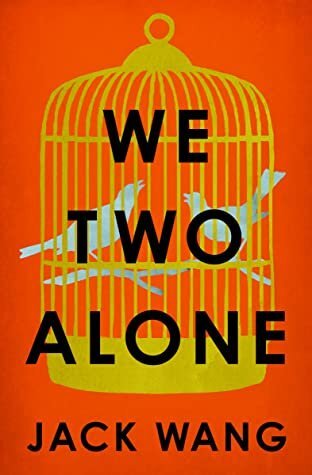
Jack Wang’s first collection of short fiction, We Two Alone, is a superior example of the form, beautifully crafted, emotionally resonant, and dramatically satisfying. Wang’s characters are primarily Chinese nationals and the sons and daughters of Chinese immigrants, people who are struggling to acclimatize to shifting geopolitical environments and/or deal with crises that threaten their way of life and sometimes their very survival. Racism is present in many of these stories, either hovering menacingly in the background or playing a dominant role in the lives of Wang’s characters. For instance, “The Valkyries” takes place in Vancouver and Banff shortly after the end of the First World War. Teenage orphan Nelson, who lives in Vancouver’s Chinatown and works in a laundry, loves hockey and is highly skilled, but being Chinese he’s denied the opportunity to play in an organized men’s league. Instead, when he discovers a women’s league, he assumes a disguise, passes himself off as “Nelly,” and becomes one of the stars for his team, the Valkyries. But when his deception is uncovered, the price he pays goes far beyond a mere settling of scores. A remarkable feature of Wang's fiction is his ability to convincingly evoke an assortment of cultural and historical contexts. In “The Nature of Things,” it is 1937. Young Chinese couple Frank and Alice must flee Shanghai because of the escalating hostilities with Japan. Frank, an American-educated physician, puts his pregnant wife on a train to safety but refuses to leave the city himself because of his work. From this point the story chronicles Alice’s desperate yearning and fears for her husband after the Japanese invasion, and her eventual realization that she will never see him again. The narrator of “The Night of Broken Glass” is recalling the time just prior to World War II when he, his father and stepmother lived in Vienna. The narrator’s father is a Chinese diplomat, versed in the ways of the world, wily and pragmatic, and the story tells of the father’s careful navigation of shifting political winds when the Nazis move into Austria and begin victimizing Jews, minorities and foreign nationals. “Everything in Between,” set in South Africa at the beginning of the Apartheid era, describes a Chinese family’s efforts to live a normal life under exceedingly challenging circumstances. “Bellsize Park” takes place in contemporary England and poignantly depicts the doomed relationship of two students: Peter, who is Chinese, and Fiona, who is English. And in “All Hallows” divorced Ernie’s irresponsible nature is thrown into sharp relief when he takes his children, Ben and Toby, trick-or-treating the day after Halloween because he’d failed to show up the night before as he’d promised. As good as these stories are, the outstanding piece in this collection is the masterful novella from which the volume takes its title. Leonard and Emily, both actors, are divorced. Leonard, in his late forties and still hunting for the Big Break, is entering a premature cognitive decline, which he recognizes because it is the same disorder that left his mother debilitated before her death. As he struggles with worsening symptoms, he recalls his years married to Emily, who finally gave up on the dream, retired from acting and left Leonard when he refused to do the same. Wang chronicles their life together from beginning to end: the shared aspirations, thwarted idealism, the minor triumphs countered by heartrending setbacks that marked their marriage and their careers. In the end, a crisis brings Leonard and Emily together one more time to enact a final scene before Leonard slips into the darkness and is unable to remember what they meant to each other. There is an effortless and seamless quality to Jack Wang’s writing that is particularly impressive. The nuts and bolts of craft, the scaffolding of plot, never intrude on the reader’s experience. In each of these tales Wang generates considerable narrative momentum by introducing his characters in place, slowly revealing their hopes and fears as he ramps up the stakes and the tension, and then letting the drama unfold in a manner that is patient and never forced. There is nothing cheap or maudlin going on here. Wang frequently elicits an emotional response from the reader, but without exception this reaction arises naturally out of the drama we’re witnessing. We Two Alone is a thoroughly engaging volume of short fiction by an exceptionally talented author. These are near flawless tales of personal struggle and modern angst: deeply empathetic, humane stories by a writer whose command of form and technique is unfailing.
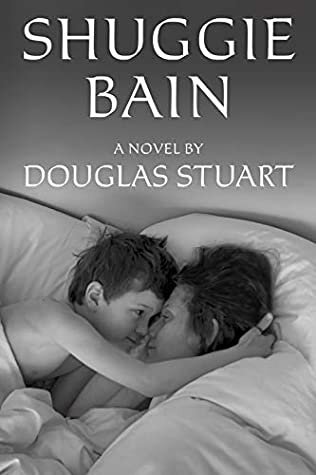
Douglas Stuart’s gut-wrenching, prize-winning first novel tells the story of young Hugh “Shuggie” Bain, whose disastrous family life provides the framework for a sordid, tragic tale of alcoholism and abuse. We first encounter teenage Shuggie in 1992. He is fending for himself, working for cash in a Glasgow supermarket. But how did he get there? The middle sections of the book answer that question by taking us back to the early 1980s. Shuggie is the youngest of the three children of Agnes Bain, a beautiful, proud woman in her thirties who habitually takes up with selfish, manipulative, abusive men. His father Hugh, known as “Big Shug,” drives a taxi and routinely carries on with women of every stripe and description. For solace, for fun, and to blot out the world, Agnes drinks, invariably to excess. It’s a hardscrabble life that lacks hope and promise, but things go from bad to worse after Shug moves his family out of the cramped council flat they’ve been sharing with Agnes’s parents to a house in a remote mining village. This is post-industrial Scotland. The mine has all but shut down and almost everyone is on the dole. The mining town is a ruined, scorched place where, as Stuart tells us, “the land had been turned inside out,” a place neglected by those in power and despised by the people who live there, a place that breeds cruelty, misery and addiction. When Agnes’s drinking and resentment over his philandering become more trouble than they’re worth, Big Shug abandons his family altogether. Left alone with three children, Agnes’s dependence on alcohol escalates: most days she is dysfunctional by noon and comatose by evening. Money is tight and most of it goes on lager and vodka. Under these wretched circumstances the children—Shuggie, Catherine and Alexander (known as “Leek”)—care for themselves as best they can, pinning threadbare hopes on their mother’s rare and sporadic periods of sobriety while steeling themselves for the inevitable relapse. Despite her dereliction, Shuggie grows up idolizing his mother, in thrall to her beauty, serving her needs before his own, unaware that she’s deliberately raised him to be her enabler. His siblings are more mature and pragmatic, Catherine especially. She is the first to leave, absconding for a new life in South Africa. Later, in a drunken rage, Agnes throws Leek out of the house. Left alone with his mother, Shuggie struggles to assume necessary responsibilities and keep the household afloat while continuing to attend school and learning how to navigate an alien and hostile adult world. With Agnes having relinquished the roles of guardian and provider, Shuggie often goes hungry, but rarely does his mother go without drink. Still, Shuggie clings to hope, managing her moods, battling her cravings and encouraging sobriety. But it’s a battle against a relentless adversary that he has no chance of winning. Shuggie’s torment is magnified by growing up a misfit, aware that he is different from other boys but helpless to do anything about it, subject to taunting and physical abuse because of his proper speech, effeminate mannerisms and indifference to typical masculine pursuits, like football, girls and automobiles. The novel is long and structured in the manner of a symphony, with themes and motifs repeating and intensifying as the story progresses, the whole thing building to a devastating crescendo. Douglas Stuart’s down and dirty novel is not for the faint of heart. A portrait of anguished love and addiction, Shuggie Bain offers only faint flickering glimmers of hope. But it gets to the heart of the matter as it portrays the human will to survive, as only the best fiction can.
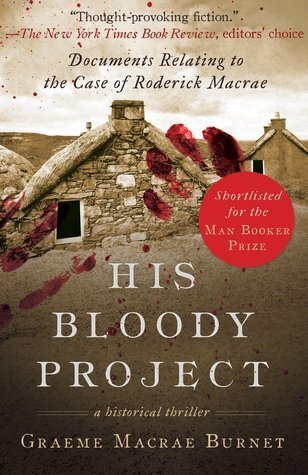
Graeme Macrae Burnet’s Booker Prize-nominated novel, His Bloody Project, purports to reconstruct, using contemporaneous documents, the story of a brutal triple slaying that took place in the Scottish village of Culduie. On an otherwise unexceptional day in August 1869, seventeen-year-old Roderick Macrae strolled up the lane from his house to the house of a neighbour, Lachlan Mackenzie. On the way there he was seen by another neighbour and spoke with her. She later testified that Roddy’s manner was normal: he was calm, gave her no cause for fear and did not raise her suspicions. Once at the Mackenzie house he used farming implements he had brought with him to bludgeon to death Lachlan’s daughter Flora and son Donnie, then waited for Lachlan. When Lachlan arrived home, Roddy beat him to death as well. Burnet’s novel consists of an account of the incident written by Roddy after his arrest, several witness statements, medical reports, an excerpt from a study of criminal psychology, and the trial transcript. Posing as an historical document, Burnet’s novel is thoroughly convincing, not to mention suspenseful and addictively readable. His detailed but never heavy handed prose brilliantly reconstructs the period in which the story is set, capturing the doleful spirit of the times, the superstitions that people held, the laws under which they laboured, the technologies they used, their pastimes and the beliefs that swayed attitudes and behaviours. The book, and Roddy himself, are infused with a mood of tragic inevitability. At the trial, Roddy’s motives come under close scrutiny. Experts and witnesses weight in on possible reasons for his actions. But questions persist. How can anyone know the content of another man’s mind? Graeme Macrae Burnet has written an astonishing and gripping novel that gives the reader plenty to think about.
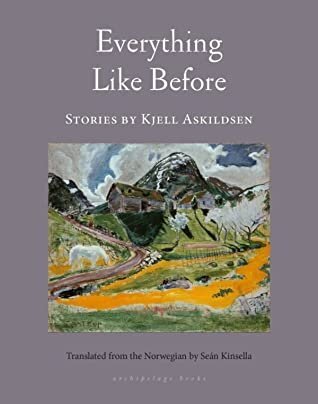
Human interaction can be joyful and enriching, but it can also be worrisome, disturbing and destructive, and it is from this murky shrouded world of suspicion, bitterness, chafing desire and petty grievance that the short stories of Norwegian author Kjell Askildsen (1929-2021) emerge and flourish. The stories collected in Everything Like Before represent a selection of Askildsen’s astonishing work over a long career and reveal his fascination with the ways in which our efforts to communicate with one another can go awry and slip unaccountably into conflict and estrangement. In minimalist prose stripped of all but the most essential details, Askildsen describes chance encounters that leave people hurt and confused and long-term relationships pushed to a breaking point. These conflicts arise for many reasons. They can result from trifling misunderstandings or absurd disagreements, seemingly inconsequential flashes of irritation, mistaken assumptions, or grudges of long standing. Askildsen frequently writes about family members who don’t get along and couples caught in passive-aggressive relationships whose resentments escalate into major disputes. But he is also adept at chronicling fraught encounters between strangers. In “A Lovely Spot,” a couple has driven out of the city to spend time at their summerhouse on the coast. Their bickering is constant but more-or-less benign—his driving, what to do during their holiday, etc.—but an accumulation of minor annoyances drives the husband to an inexplicable act of aggression. In the title story, Carl and Nina are on vacation in Greece. Carl is annoyed that Nina enjoys getting drunk and flirting with other men. Nina finds his judgmental attitude tiresome. They argue, he tells her it’s humiliating. After a night of unrestrained drinking Carl realizes their differences are irreconcilable and that they cannot continue. The next morning, while they are having sex at Nina’s instigation, Askildsen tells us, “He remembered, and wanted to resist, otherwise what had been done would be undone.” But it’s too late, the wrongs of the past are suddenly forgotten, and they end up back where they started. And in “A Sudden Liberating Thought,” an apparently random encounter between two old men on a park bench leads to repeated meetings and many companionable discussions, until it is revealed that the two are linked by an experience from the past, which makes it impossible for them to go on meeting. Askildsen’s outlook on human nature is bleak and much of his writing is dour, but we find humour in these stories as well, usually when a character attempts to decipher another’s motivations or anticipate someone’s next move. The stories are relentlessly engaging, filled with startling moments of illumination and stark realization, and Sean Kinsella’s translation is nothing short of masterful. Everything Like Before is a remarkable collection, and Archipelago Books deserves kudos for making the work of this exceptional European writer available to North American readers.
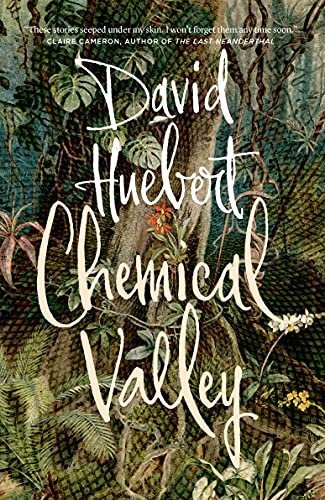
The world of David Huebert’s second collection of short fiction, Chemical Valley, is a poisonous, inhospitable place. In some respects, as we turn these pages, it’s easy to imagine we’re visiting a future world: the one that awaits our elder selves and our descendants should humans continue to obliterate CO2-absorbing flora and allow toxic effluents and emissions to pour unchecked into the land, sea and air. One might assume that the author intends these tales of struggle and longing in a tarnished landscape to be cautionary: prognostications of environmental cataclysm, annihilation at our own hands. But as we read, what David Huebert is really telling us becomes clear: this is the world in which we currently reside, and the confusion and desperation his characters experience as contaminants seep unseen into the earth and the biological slowly succumbs to the chemical is everyone’s here and now. This is serious business. But though the messaging is palpable, there is nothing heavy-handed in his approach: no doomsday declaration, no portentous drumbeat. In Chemical Valley, as in his previous volume of stories, Peninsula Sinking, David Huebert’s knack for creating engaging characters and finding interesting things for them to say, do and think is on abundant, boisterous display. Huebert’s characters are Every-man and -woman, people whose daily rituals, quandaries and tribulations mirror our own. The narrator of the title story, set in Sarnia—hub of Canada’s petrochemical industry and nicknamed “Chemical Valley”—works at a processing plant. His partner, Eileen, is off work, suffering from a mysterious, debilitating malady. With the indifference of his employer as a backdrop, we witness him floundering under domestic and professional pressures while grappling with manifestations of community contamination, so widespread they have infiltrated his home. “Swamp Thing” tells the story of teenage Sapphire. Bouncing between her separated parents, embroiled in a clandestine affair with her female English teacher, Sapphire and her friends Dee Dee and Jenna are members of the ultra-climate-change-conscious generation meeting the disastrous consequences of the previous generation’s environmental profligacy head on. The story, set during a punishing heatwave, chronicles Sapphire’s emotional awakening through a series of catastrophic climate/environmental incidents, culminating in “a super-flare, a major melt-down, and a death at the plant.” Elsewhere in the book we encounter Deepa, a young mother barely coping with a recalcitrant newborn, a complacent husband and a rodent infestation (“Cruelty”), a reluctant hockey enforcer whose personal life is a mess (“Six Six Two Fifty”), Zane, whose partner Geoff is obsessively preparing for the coming environmental apocalypse (“SHTF”), and fifty-year-old socially-challenged Edward, bullied all his life, afflicted with a maddening fungal skin infection, whose man-made companion (the GenuFlesh XS-4000, “a fully customizable” “anthropomorphic robobride”), named Lily, is just about done for, worn out by his constant need (“The Pit”). Throughout the book, Huebert’s prose shines, frequently catching the reader off guard with startling but memorable turns of phrase and delirious imaginative leaps. And while the manic energy, eccentric humour and wry observations on life and love keep us entertained, the book’s rich emotional core draws us in, touching us at the most profound level.
David Huebert writes in a pulsating, kinetic contemporary voice. Still at an early point in his career, he has complete command of his craft. These quirky, artfully composed stories are a gift worth savouring.
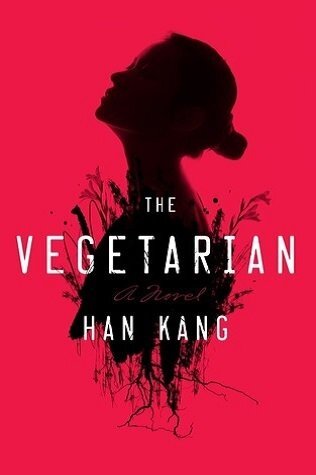
The sudden decision of a young woman to become vegetarian has dire consequences in Korean author Han Kang’s first work to be translated into English (brilliantly by Deborah Smith). The book is divided into three short sections. In the first we meet Yeong-hye, who is married to Mr. Cheong. Mr. Cheong doesn’t like disruption: one of the reasons he married Yeong-hye was because she is “unremarkable.” Their life together is placid and holds no surprises, until the day he returns home to find her throwing away all the meat in the freezer. She informs him she’s become vegetarian and when he presses her for a reason, she tells him that she’s been visited by a violent, bloody recurring dream. The change creates a deep rift in the marriage, and, later, a savage confrontation with her father leaves Yeong-hye injured and hospitalized. In part two, “Mongolian Mark,” Yeong-hye’s brother-in-law is an artist obsessed with the human body. He convinces Yeong-hye, now living on her own and, after her earlier trauma, in a fragile mental state, to take part in a project that requires her to be filmed naked. And in part three, “Flaming Trees,” Yeong-hye, institutionalized and refusing to eat, is visited by her older sister, In-hye, at the facility where she’s being treated. The Vegetarian is infused with a profound sense of loss and excruciating melancholy. Yeong-hye’s behaviour comes under a microscope: other characters are unable to accept her actions and obsessively try to decipher her motives and figure out why she is destroying herself. They claim to want to help her, but from the moment she makes her decision, almost every human interaction that Yeong-hye endures is a form of violation. This concise narrative is delightfully enigmatic, deeply disturbing and psychologically rich. It generates great suspense as well as a uniquely creepy urgency. The questions that swirl around Yeong-hye’s mysterious desires have to do with asserting control over one’s body. Who, other than oneself, has the right to make those decisions? Han Kang has written a haunting, mesmerizing, nightmarish work of fiction that readers will not easily forget.
∞Finally, four retrospective titles that fall into the category of “modern classic.” These books, written by iconic 20th- and 21st-century authors of fiction, are recommended without reservation.

Margaret Drabble’s second novel, published in the UK in 1964 when the author was twenty-five, is an account of a troubled period in the marriage of a young couple, David and Emma Evans, parents of toddler Flora and infant Joseph. The family lives in London. But David, a professional actor, must go to where the work is, and when he is invited by a famous producer named Wyndham Farrar to take part in a theatre festival in rural Hereford, he accepts. His insistence that Emma, the children, and their French au pair Pascal, accompany him into the countryside for several months causes some tension because to do this Emma must decline a prestigious newsreader opportunity with a television network, a position just offered to her and that, after three years of marriage and a long and exhausting period devoted to meeting the relentless demands of two young children, she had been eager to accept. But this is the 1960s, and Emma dutifully relents in order to support her husband’s ambitions, but not without some bitterness. Emma narrates the story of her Hereford adventures with ironic, clear-eyed and occasionally ruthless honesty—honesty that extends to herself. Emma—intelligent, observant, consummately self-aware—readily admits that she is something of a spoiled brat, accustomed to nice things and the abundant distractions that a cultural hub like London offers. She hates the house in Hereford where the family takes up residence. Easily bored, she finds provincial life tedious and avoids mingling with the town’s inhabitants. She has little patience for people she regards as foolish and, when it suits her, can be pointedly, unapologetically rude without any thought for consequences. But Emma is also beautiful (before marrying David she had spent time modeling) and despite her misanthropic tendencies people are attracted to her. In Hereford, with rehearsal and performance commitments, David is preoccupied and short-tempered. He has little time for her and no patience for the children. Emma’s social circle is limited to Pascal and David’s theatre colleagues, many of whom she finds tiresome. But a notable exception is producer Wyndham Farrar, a man twenty years her senior, with whom, almost without trying, she strikes up a friendship. Flattered by Wyndham’s chivalrous attentions, amused by his world-weary cynicism, and driven by a perverse and vengeful impulse to inflict pain on David, she lets the relationship flourish and evolve into a dalliance. The drama unfolds in a leisurely fashion and throughout the novel Drabble’s prose is poised, elegant and brimming with witty asides and sardonic observations on love and marriage. When the messy denouement arrives, it’s not exactly a surprise, but it still lands with a clatter and causes great damage and emotional fallout. As in her first novel, A Summer Bird-Cage, in her second Margaret Drabble devotes her attention to the two issues that would inform her fiction for years to come: the role of women in society and the tensions between the sexes. The novel addresses profound themes, but for all its seriousness and social consciousness, The Garrick Year is also a delightful entertainment and, without any doubt, the product of a mature and sophisticated talent.
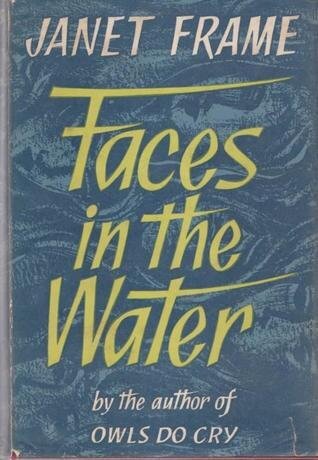
Like her first novel, Owls Do Cry, Janet Frame’s second novel draws on the author’s personal history. Istina Mavet, a 20-year-old schoolteacher suffering from a nervous disorder, is placed in Cliffhaven, a mental institution for women. Frame writes in Istina’s voice: in the various wards where she is confined, every observation, every experience, comes to us through the distorted lens of Istina’s troubled perspective. Istina’s story takes place in the days before anti-psychotic drugs (late 1940s, early 1950s), at a time when mental patients were regarded as subhuman and feeble-minded inhabitants of society’s fringe. Electroconvulsive therapy (ECT) was in the ascendant as a preferred treatment. At Cliffhaven, Istina is a first-hand witness to ECT being used to alter the behaviour of oversensitive and “difficult” patients and endures the threat of ECT by overworked nurses and staff to encourage compliance. In Istina’s narrative, the suffering of patients is vividly portrayed: their futile struggles against forced treatments, their confusion, tears of despair and inarticulate raving when their greatest fears are realized and all seems lost. Wards are dominated by fear—patients live in terror of being sent “for treatment,” of being put in restraints, of punishment, of humiliation. Every morning Istina wakes fearful, not knowing if the dread command, “No breakfast for you, young lady. You’re for treatment!” will be directed her way. But Faces in the Water is not a horror show from start to finish: not all the hospital staff are ogres, not all the patients are helpless victims. The reader will find a balanced ebb and flow to Istina’s account of her 10-year journey to wellness, and her descriptions of the staff and other patients—their survival strategies, obsessions and tragic delusions—are fascinating and often very moving. The novel is episodic in structure: each short chapter has an individual focus, an event or entertainment that Istina attends, or the quirky behaviour of one of the other patients, or an encounter with a medical professional. Istina begins her therapy at Cliffhaven, leaves to be with her family “up north,” but her symptoms return and she is again institutionalized, this time at Treecroft. Ultimately, she returns to Cliffhaven. It is during her second confinement at Cliffhaven that a new progressive attitude begins to reshape the handling of the mentally ill, leading to more humane treatment, and Istina is permitted to exercise more freedoms and engage with the outside world. Frame’s polished and highly imaginative prose carries the reader through even the most gut-wrenching scenes, often reaching astonishing lyrical heights. The writing is rich in metaphor and crammed with startling and memorable visual details. Harrowing but beautiful, Faces in the Water is a landmark in the literature of mental illness and in 1961 confirmed Janet Frame’s growing stature on the international literary scene as a writer whose work was attracting critical praise in addition to a wide readership.
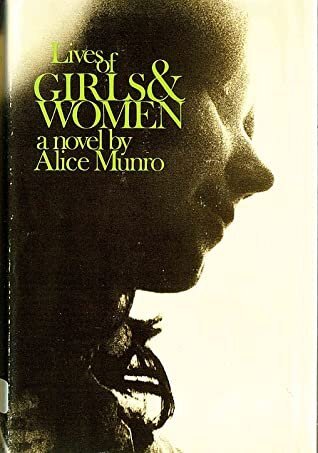
A masterful and seminal work of prose fiction, Alice Munro’s Lives of Girls and Women explores the place of women in mid-20th-century society and pivots on the gradual awakening of narrator Del Jorden to the realization that there is more to being female than catering to the needs of men. Resembling a collection of linked stories more so than a standard novel, Munro’s deeply felt, minutely observed narrative describes Del’s pre-teen and teenage years growing up in Jubilee, a small town in rural Ontario, in the years before, during and immediately following World War II. On the surface, Del’s upbringing does not challenge the boundaries of convention. Her father is an unassertive man who supports his family by raising foxes for pelts. Her mother is a housewife who has known hardship. But there is nothing conventional about Del’s approach to life, which is skeptical and outward-looking. Del’s intrepid, tireless curiosity is driven primarily by her vivacious, opinionated mother, who harbours lofty ambitions for her brainy daughter. (Indeed, as presented to the reader, Del’s father is little more than a cipher and plays a minimal role in her childhood.) In the opening story, “The Flats Road,” Del is living with her mother, father and younger brother Owen outside Jubilee on a shabby property where her father keeps his foxes and a few other animals. It is a neighbourhood populated by misfits and eccentrics where everyone is poor. Later on, Del has moved into Jubilee with her mother where they live in a rented house on River Street. Her mother takes in boarders, and, in “Princess Ida,” has embarked on a career selling encyclopedias. For Del on the cusp of womanhood, her mother—who does not attend church and expresses an acute disdain bordering on hostility for organized religion—who loves opera and pushes her daughter to excel at school—is a source of pride, embarrassment and inspiration. The novel chronicles the growth of Del’s complex interior life along with her occasionally reckless forays in the external world, and depicts her sexual awakening, her evolving attitude toward boys and love and the mysterious world beyond Jubilee that, she comes to realize, will nurture her but also try to crush her. The novel shows us Del’s struggles with her maturing body and the triumphs and misadventures that shape her into a self-aware young woman with a loving heart who values knowledge and independence. Lives of Girls and Women is a truthful, candid, supremely intelligent novel. Sometimes shocking, it is elegantly written with humour and irony. This is a novel that confronts human desire and depravity head on. It is not Alice Munro’s style to cushion the blow, to spare her characters suffering. Del Jordan often fails, sometimes in spectacular fashion. Her struggles are universal and sear themselves on the reader’s memory. Del Jordan is one of the most authentically human fictional characters you will ever encounter. Once you’ve read her story you will not forget her.
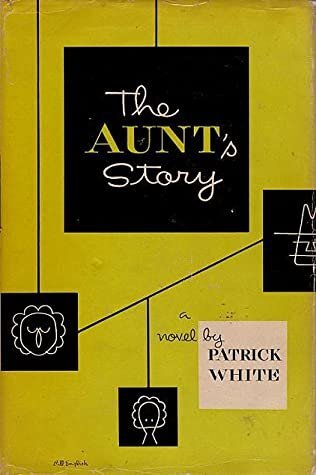
The Aunt’s Story, Patrick White’s powerful, psychologically complex, stylistically challenging third novel, probes the life of a tragically unfulfilled woman in early 20th-century Australia. In part one, Meroë, we meet Theodora Goodman, born into privilege and raised in a household clinging to the stuffy remnants of Victorian England. Her father, a landowner, is a neutral presence in her childhood and for the most part emotionally absent, while her mother—domineering, eternally dissatisfied and unfeeling—does not bother to conceal her preference for Theodora’s prettier, vivacious sister Fanny. For her part Theodora, plain, dour and conditioned by her mother’s casual cruelties to think poorly of herself, is content to exist in Fanny’s shadow. Theodora’s youthful attraction to a neighbour, Frank Parrott, goes undeclared. Years later, convinced of her own lack of worth, she rejects the overtures of a wealthy suitor. With Fanny married to Frank and raising two children, when her father dies Theodora is left to care for her mother, which she does uncomplainingly for years until her mother’s death. In part two, Jardin Exotique, newly liberated Theodora, at the age of forty-five, has embarked on a world tour, which takes her to various destinations, eventually depositing her in 1930s Paris, in a hotel where she meets and interacts with a group of needy, narcissistic, neurotic individuals of various nationalities. And in part three, Holstius, her European adventures at an end after the hotel burns down, Theodora, while crossing the United States by train on her way home, contemplates with something like horror the drab, solitary future awaiting her. Suddenly and inexplicably, compelled by a strange restlessness and sense of foreboding, she disembarks somewhere in the mid-west, wanders into a small town, and attempts to make a home for herself in an abandoned house at the top of a hill. In outline, the novel sounds like a sad and pathetic life story: a lonely spinster who has endured a stifled existence and made a habit of suppressing her emotions finally loses her marbles. In fact, The Aunt’s Story is a mesmerizing and disturbing novel of great originality, wit and candour. The angular, tortured, surrealistic qualities of Patrick White’s prose are for the reader startling and frequently disorienting, but undeniably captivating. We experience everything through Theodora’s eyes in a kind of distorted interior monologue—something like a funhouse mirror. This distortion is most pronounced in the middle section, Jardin Exotique, where we see that Theodora’s self-loathing and cloistered, repressed existence have made her withholding and secretive, fearful of ridicule, and that she has become someone who lacks the emotional vocabulary to form meaningful bonds with other people. She shares little about herself with those she meets at the Hôtel du Midi, instead allowing herself to be drawn into their dramas and petty feuds and seeming to live vicariously through the stories they tell about themselves. By the time her journey takes her to America, her grip on reality has become tenuous and she is hallucinating. The novel is without doubt a work of uncompromising genius. Maybe not everything in these pages works, but in 1948 Patrick White is taking enormous risks as he strives to push prose fiction into a realm of deeper psychological richness.
March 25, 2021
Best Reads of 2020
2020 was a dark, confusing year, and the books I read seemed to reflect that. I make no excuse and offer no apology for being drawn to dark material. But 2020 seemed to encourage that tendency in my reading choices.
Death in many guises, disease, murder, despair, vengeance, obsession, depravity, misogyny, sundry disturbing manifestations of destructive behaviour and poor decision-making, pessimistic dystopian visions, madness … the books I read in 2020 featured all of these and more. Yes, there are a few glimmers of hope peeking through here and there. But if you blink you miss them.
Still, the skill and artistry required to write from a dark place and engage the reader, sometimes against his will or better judgment, is an accomplishment in itself. You can’t help but admire the writer who populates his or her stories with disturbed or grotesque characters—people who would make you to turn and run should you be unfortunate enough to encounter them anywhere but on the printed page—and still draw the reader into that imagined world and keep him coming back for more. It requires an audacious talent to pull that off.
The books on this year’s list do not take the reader to any magic kingdoms and the damsel in distress is not likely to be rescued anytime soon. But all of them are exquisitely crafted, intelligent, provocative and enthusiastically recommended.
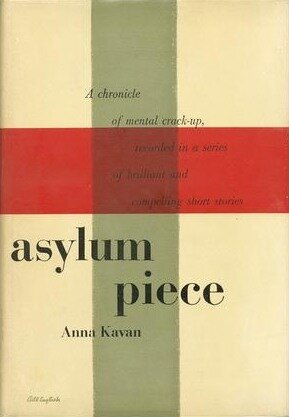
The American edition of Asylum Piece, published in 1946 by Doubleday, combines two volumes of Anna Kavan’s remarkable stories first published in the UK by Jonathan Cape: Asylum Piece (1940), and I am Lazarus (1945). From 1929 to 1937, Kavan (1901-1968) had published six novels under the name Helen Ferguson (she was born Helen Emily Woods, married Donald Ferguson in 1920, and later took the name Anna Kavan from a character who appeared in her own fiction). The stories in Asylum Piece represent a radical and stunning departure from her earlier work and came in the wake of several traumatic life events: the death of an infant daughter, the dissolution of her second marriage and a suicide attempt. In 1938, suffering from severe depression, she was admitted to a psychiatric clinic in Switzerland. Many of the stories collected in this volume are set in just such an institution and depict fragile, brittle states of mind. Others, such as those collected in Part One of the American edition, titled “The Summons,” present characters being persecuted, mistreated or imprisoned for no clear reason by a monolithic, impenetrable bureaucracy. The focal point in Part One is often “the advisor,” an official to whom the narrator reports for advice and guidance, but who proves to be either untrustworthy or uncooperative. In the enigmatic, Kafkaesque title piece, “The Summons,” the unnamed narrator is facing charges of some sort, but can’t find out what the charges are, who has made the accusation, or even what the punishment might be. Part Two, “Asylum Piece,” comprises eight stories, by turns moving and unsettling, written from a variety of perspectives, dramatizing interactions between inmates of a psychiatric clinic and those who treat and care for them. Particularly memorable is the fifth of these, which begins on a radiant summer morning with a young man and woman arriving at the clinic by car. The woman is nervous, exhausted from traveling and somewhat oblivious, and must be helped inside. The man is impatient and openly annoyed with her. At the interview with the head doctor, in response to questioning, she declares that she is there against her will and that she never wanted to come to the clinic, but even as she speaks she realizes that her hysterical tone is working against her and that her fate has already been decided. Once in her assigned room, she descends into a state of despair. The stories in Part Three, “I am Lazarus,” describe a variety of scenarios and often depict the horrific effects of war on mental states. One exception is “Benjo,” in which the narrator recalls encountering a local character named Benjo when she was living in “the other country.” She had bought an old farmstead house and workers had only just completed extensive renovations when Benjo shows up at her door. He is friendly and the two build a rapport, but she is later disturbed by the degree of familiarity he assumes and begins to suspect him of harbouring some veiled motive. Many of Kavan’s stories are written from bitter experience and the level of detail throughout the volume is often astounding. The reader will also notice the prose, which is crystal-clear and tightly controlled, a trait that carried over into her later works. In Asylum Piece Anna Kavan unflinchingly probes the murkiest recesses of the human psyche. This is a dark, disturbing, brilliant masterpiece and a landmark volume of short fiction.
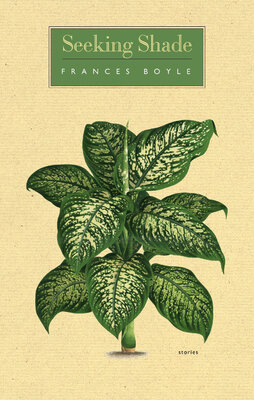
Frances Boyle’s stories chronicle the many ways things can go stale or turn sour in people’s lives, particularly where male-female relationships are concerned. Many of the characters in Boyle’s stories are nursing secrets. They’ve misbehaved, they’ve betrayed their partners. Or, in some cases, they have simply changed: they have formed new passions; they’ve been pushed beyond endurance and need to take drastic action; they’ve grown in surprising ways and are no longer the person they once were. In “Dance Me,” Estie’s craving for fun and a carefree existence causes her to resist pressure to settle down with childhood sweetheart Paul, whose medical career makes him, in the eyes of her family, a perfect match but who to her seems far too serious about life. “Cold Air Return” tells of the aftermath of Jacqui and Matt’s breakup. Sick of Matt’s dishonesty and smarting from a string of broken promises, she walked out expecting him to try to win her back. Instead, Matt moved to a different city, taking much of her stuff with him, including her car. Now she finds herself in the uncomfortable position of selling off the things in his apartment—helped by Carol, Matt’s pragmatic ex-wife—trying to raise money to bail him out of jail. “A Beach on Corfu” chronicles teenage Elizabeth’s summer of 1969 and her infatuation with Mark, the leader of the youth drama program that she attends. In her immature and impressionable mind, she builds Mark up into a kind of romantic icon and is later crushed when he reveals to her a cold and callous heart. And the stunning title story follows Judith’s ill-conceived attempt to leave her demanding, unaffectionate husband Tom. On a hot day while Tom is heading out of town on a business trip, she takes the children with her but runs into more obstacles than she anticipated and is finally overwhelmed, done in by an inability to improvise when the situation turns against her. Frances Boyle is an adventurous writer, a risk taker who stretches her art by exploring a variety of forms and settings. A few of the stories take place in the middle decades of the previous century. “Running Through Green,” about a college student, Jim, who becomes distracted by a girl and fails his year, is composed in the seldom-used second-person voice. Boyle’s prose is richly detailed, disciplined and visually precise. Her stories tackle complex and difficult relationships with great compassion but without resorting to sentiment or becoming maudlin. These are smart, provocative stories: dramatically absorbing, humane and psychologically rich. Seeking Shade is a significant accomplishment, and Frances Boyle, whose previous publications include a novella (Tower) and two volumes of poetry, is a writer worth following.

Emma Donoghue’s startlingly prescient novel, The Pull of the Stars, is set in a Dublin maternity ward during the 1918 influenza pandemic. Specifically, the action takes place over three days beginning on October 31, the day before the novel’s main character, Nurse Julia Power, will turn thirty. Julia’s hospital—ravaged by the effects of the war as well as the worsening pandemic—is impoverished, understaffed and in a perpetual state of crisis (her “ward” is actually a converted supply room with space for three beds reserved for women sick with the flu who are about to give birth). As the novel begins, Julia arrives for her shift to discover that one of her patients has died in the night, and, as the day progresses, Donoghue chillingly evokes the myriad and horrific challenges facing health professionals at a time when a deadly illness of mysterious origin is spreading unchecked through the population via mechanisms that defy understanding. The novel’s dramatic urgency derives from the fact that the virulent respiratory illness makes pregnancy and childbirth even more dangerous than it normally is. Julia’s responsibilities to her patients—to ease their distress and see them safely through a period of physical dependency where any number of things can go wrong—often prove impossible to uphold. Over the course of the three days we see her grapple with as many deaths as births—only rarely do the fortunes of her patients match her hopes for them. As we’ve seen previously in Emma Donoghue’s historical fictions, she does not shy away from depicting the squalid and gory details of her characters’ daily lives. In The Pull of the Stars, childbirth is rendered as a torturous rite of passage, fraught with risk for both mother and child. For Ireland’s typical young mother or working-poor female in 1918, there is little beauty or magic in being pregnant, and none of the romance and glowing promise we find in popular representations. It is, in fact, a dread condition for women who are frequently malnourished and physically depleted from caring for already large families and labouring like slaves from dawn to dusk. More often than anyone would like to admit, it is a death sentence. Julia’s concerns and activities are not limited to the hospital, and her emotional life deepens as the action moves forward. She lives in a flat with her brother Tom, who returned from the war shell-shocked and unable to speak. For Julia, Tom is a source of comfort, but also a source of worry and heartache. In the makeshift Maternity/Fever ward, Julia develops a close and surprising bond with a young volunteer worker, Bridie Sweeney. Nurse Julia does not regard herself as naïve—she is acutely aware that unwholesome living conditions are a prime contributor to the misery her patients endure. Experience has taught her that women’s subservience to men and their forced adherence to rigid religious doctrine exact a huge physical toll. But Bridie’s situation as a boarder at a nearby convent opens Julia's eyes to a whole new world of suffering of which she is ignorant. Julia Power understands that there are limits to her influence. She will never fix the rampant inequities to which she is witness. She knows that she is but a miniscule cog in a massive wheel. But she emerges from her experiences over these three days profoundly altered, newly energized to make a difference, to alleviate suffering, to defy the forces of oppression. Emma Donoghue’s novel is written on an intimate, human scale, but its message is large: that if we can find a way to set aside our differences and accept our shared humanity, it will see us through any crisis.

Following her mother’s death, 40-something Karen returns to Nova Scotia to care for her developmentally disabled sister Kelli and take charge of the family home. In Toronto, where she’s lived and worked for years, Karen has recently gone through a painful and messy divorce: these wounds are still fresh. Karen is a lone soul: her father is long dead and there are no other siblings. She seems to have few friends and no other relatives. About twenty years earlier, when she asserted her independence and left home determined to build a life that did not revolve around serving the round-the-clock needs of her mentally challenged sister, her mother accused her of selfishness. They argued, and the relationship since has been strained, to the point that, though they communicated, Karen did not even know that her mother’s cancer had advanced to the life-threatening stage. This is the setup for Watching You Without Me, Lynn Coady’s suspenseful tale of a grieving young woman’s efforts to break free of a past that has left her guilt-ridden and emotionally fragile. Enter Trevor, a support-worker employed by a care firm called Bestlife and assigned to Kelli’s case. Karen, in a highly vulnerable state and overwhelmed by the myriad chores and life-altering decisions that follow the death of a parent—concerning the house, its contents, Kelli’s future, and, as it turns out, her own future—is grateful for Trevor’s seemingly kindly insistence on helping out in any way he can. She realizes that he’s pushy and manipulative, controlling and temperamental, but is confident she can handle him, and since she has no one else to rely on she seeks his advice and accepts his recommendations on care facilities where Kelli could take up residence once the house is sold. Trevor becomes a fixture, assuming household chores and insinuating himself into her life in other less obvious ways. The story develops as a gradual dawning, with Karen resisting the evidence before her eyes until so much disturbing truth has been revealed that she’s forced to take drastic action. Coady’s masterstroke in this novel is Karen’s first-person voice: a breezy, uninhibited, occasionally expletive-laced, sometimes very funny vernacular that carries the reader along through the numerous twists and turns of an intricately plotted story. Watching You Without Me, a smart and enormously entertaining page-turner, is also a triumph of storytelling, filled with complex characters whose fates come to matter greatly.
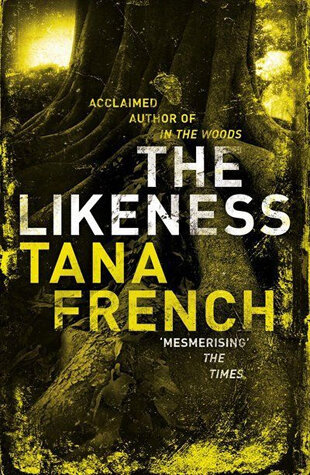
In The Likeness, the second of Tana French’s Dublin Murder Squad novels, Detective Cassie Maddox has transferred out of Murder to Domestic Violence. Still recovering from the trauma of a previous undercover assignment, she is abruptly called to the scene of a new murder by her colleague (and lover) Detective Sam O’Neill. The body of a young woman has been discovered in an abandoned cottage in Glenskehy, a village some miles outside of Dublin. It’s all very mysterious and hush-hush, and Cassie can only wonder why Sam needs her to visit this crime scene and view this body. The answer is shocking and eerily disturbing: the young victim is Cassie’s physical double and has been identified as “Alexandra (Lexie) Madison,” which was Cassie’s undercover name. Also present at the scene is Frank Mackay, Cassie’s boss in Undercover when she was on the case as Lexie Madison. A bit of investigating reveals that “Lexie” was a student at Trinity University and lived in Glenskehy with four other students in Whitethorn House, the old manor house owned by the wealthy landowning March family, passed down through the centuries and recently inherited by Daniel March, one of the four students. Frank is keen to withhold news of the death from the four and, under the ruse that Lexie has recovered from her wounds, recruit Cassie to pose as the dead girl and insert her into Whitethorn House to run an investigation from the inside. Sam is reluctant to place Cassie in a potentially lethal situation, arguing that there are too many unknowns. Eventually though, yielding to Frank’s charms and some dubious reasoning, Cassie agrees to once again assume the identity of Lexie Madison and soon thereafter moves into Whitethorn House with Daniel, Abby, Rafe and Justin. What ensues is a uniquely fascinating domestic whodunit as Cassie probes the strangely intimate relationship that exists among the students. As Cassie works the inside angle, Sam investigates the dead girl, digging into her origins and background, trying to determine her identity in the hope that this might cast light on the motivation for the murder. Cassie’s undercover skills remain sharp. She is able to carry off the subterfuge with only a few minor glitches and quickly gains the trust of her four housemates, while at the same time noting their habits and observing their behaviours. What she doesn’t anticipate, however, is becoming so attached to life at Whitethorn House that her sympathies and loyalties begin to grow murky and divided. In this novel, Tana French confirms that her hugely successful, prize-winning first novel, In the Woods, was no fluke. This complex, layered story dwells for much of its considerable length on the hermetic bond that exists among five people, including their emotional interdependence, and the breakdown of that bond when outside pressures are brought to bear. The prose is lush, and French uses the rural setting to great effect. In The Likeness, Tana French has written an absorbing novel that doubles as an intricate study of human psychology and a moving and gripping entertainment.
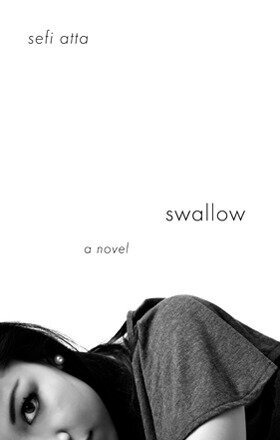
The struggles of unexceptional people living in 1980’s Nigeria are the focus of Sefi Atta’s moving and gripping second novel, Swallow. The story is narrated by Tolani Ajao, a young Yoruba woman living in Lagos who has moved there from her home in Makoku village seeking a brighter future and a better, more modern way of life. Tolani shares a simple apartment with another young woman, Rose Adamson, a city girl with an impetuous manner who is not shy about voicing her dissatisfaction with the state of the country and her marginal existence. For Tolani, life in the big city is nothing like what she had hoped it would be. The infrastructure is dilapidated. Power outages are frequent. Tolani and Rose both work at the Federal Community Bank and find the daily commute back and forth to their office long and tedious. Financial pressures are relentless. One day Rose is fired from her job for refusing to submit to the sexual advances of her boss, the odious Mr. Salako, and Tolani is shocked when Salako approaches her to fill the position. But Tolani is accustomed to doing what she is told. Unwillingly, she becomes Salako’s administrative assistant, and is not surprised when he makes similar advances toward her and then becomes belligerent when she rebuffs him. Meanwhile, Tolani is growing impatient with her unambitious boyfriend Sanwo, who is content to drift through life eking out a modest living making “deals” while giving little thought to their future together. At Rose’s urging, Tolani presents him with an ultimatum regarding their marriage plans, but immediately regrets her actions when he grows sullen and annoyed. Trying to appease, she allows Sanwo to talk her into investing in his next deal, a sure thing that will produce a large return in a short time. When the deal turns out to be a scam and Sanwo confesses that her money is gone, she breaks up with him. Rose, who has not found another job, has been spending her time with a shadowy character named OC, and one day she approaches Tolani with a drastic and dangerous scheme that will solve their money problems once and for all. Tolani, knowing that losing her job at the bank is a distinct possibility after she files a complaint against Mr. Salako, considers the ramifications of Rose’s offer, which requires that she become party to a criminal enterprise. In the end, Tolani, facing a decision about the kind of future she wants for herself, flees the city and ends up back in Makoku living with her mother and considering her options. Atta’s disturbing and deeply affecting novel tells a story of ordinary people facing heartbreaking choices. Tolani is smart and enterprising but lives in a world where prosperity is a dream for all but an elite minority of the most fortunate and the most corrupt. Can she learn to accept the hand that life has dealt her? And if she cannot, what can she do about it? When all is said and done, it is her past that seems to hold the answer.
February 14, 2020
Best Reads of 2019
Looking over the books I read in 2019, I’m struck by how many of them are “old.”
“Old” is, of course, a relative concept: people have different ideas about what makes a book—or any object—old. It doesn’t simply come down to age. It’s probably fair to say that a book that was printed and bound 400 years ago is by any standard “old.” But what about a book published 20 years ago? What if, for the sake of definition, we choose to believe that any book that is “not new” qualifies as “old?” What exactly do we mean by “not new?”
In this acquisitive age, corporations and advertisers do what they can to ensure that our purchase decisions are driven by notions of newness, which is often equated with fresh or original or exciting. There is a measure of value implicit in the quality of being new, as opposed to being old, which we sometimes see equated with moribund, irrelevant or obsolete. New is desirable. Old is not. Gadgets, furniture, housewares, clothes, cars, music … The push to buy new is relentless.
Regardless, and for any number of reasons, there are times when only a book published years ago will satisfy the craving. But our choices will seldom be random. We’re more likely to seek out specific older books because of their reputation: they’ve been deemed classic, or we read them years ago and want to re-live the experience or see if our memory is accurate, or we want to read something else by an author we admire. But when you’re rating books, somehow it doesn’t seem quite fair to measure a new book that hasn’t had time to establish its worth against one that has won awards and been lavished with praise for thirty or forty or fifty years and is still in print after all that time.
So, in the interests of fairness, and since I make the rules, and since I don’t have to answer to anyone, I’ve decided that for 2019 I will leave the “old” books off my list of best reads. Next year I might do things differently. We’ll see.
And, for the record, these are the “old” books I read in 2019. All of them would have been on my list were I not so concerned with fairness:
A Summer Bird-Cage by Margaret Drabble, published in 1963 by Weidenfeld & Nicolson.
The Bridge by Maggie Hemingway, published in 1986 by Jonathan Cape.
The Centaur by John Updike, published in 1963 by Knopf.
Stories by Jean Stafford, John Cheever, Daniel Fuchs, William Maxwell, published in 1956 by Farrar, Straus, and Cudahy.
Sacred Families: Three Novellas by José Donoso, published in 1977 by Knopf.
Repetition by Peter Handke, published in 1988 by Farrar, Straus & Giroux.
The Stone Arbor & Other Stories by Roger Angell, published in 1960 by Little, Brown.
Best Reads of 2019 (New Books Only):
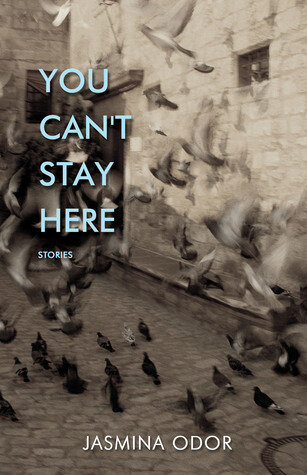
Movement and change are core to Jasmina Odor’s first collection of short fiction. Her characters are edgy and dissatisfied with their lot in life, always searching and questioning, challenging the limits that their circumstances have imposed. Even when their lives seem fine, they spend their days looking for a way to step out of the present and into some new way of being. Often though, things are not fine. The tragic backdrop for some of the stories in You Can’t Stay Here is war, specifically the brutal and prolonged civil war that split the former Yugoslavia into a smattering of smaller states. Odor emigrated to Canada in the early 1990s and she brings a profound sensitivity to the forces that compel people to seek refuge from dangers seen and unseen, and to what it means to have your life divided into “before” and “after,” to her short fiction. But, beyond all this, her stories are compellingly multi-faceted, layering personal complications on emotional complexities, building psychologically intricate and elaborately detailed worlds for her characters to inhabit. In the opening story, “A Board of Perfect Pine,” Josh and Nina brave a winter storm to attend a party at Josh’s parents’ home, where Nina drinks too much and misbehaves embarrassingly with an older man for reasons that she can’t explain other than to say that some part of her is “curious and yearning and unapologetic.” In “The Time of the Apricots” Juliet’s novel has been made into a film and she has attended the premier. The story is narrated by her boyfriend Alek, a Croatian refugee, who spends much of the story trying to decipher her puzzling behaviour and figure out why she is so unhappy when everything seems to be working in her favour. And in the title story Ivona and Sven, Croatian refugees living in Canada, have laboured to bring Sven’s parents over for a visit. But Ivona, dealing with a boss at work who is attracted to her, a young son with autism, and deepening feelings of restlessness and foreboding, cannot abide their criticisms and, knowing that she’s putting her marriage at risk, tells them they have to leave. For many of the author’s people love is an impossible mystery, causing only pain. Odor’s writing is lush and full-blooded, filled with arresting phrases and telling observations on the numerous subtle ways that people confound and cause damage to each other. These are wise and poignant but never sentimental stories that grow more fascinating with repeated readings. A stellar debut.
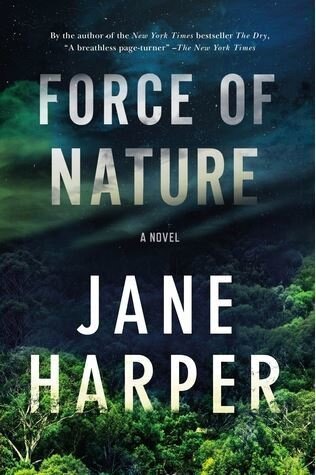
In Force of Nature, Jane Harper’s gripping follow-up to her award-winning debut, The Dry, we are once again led through a complex, multi-layered case by federal agent Aaron Falk. Ten employees of BaileyTennants, a conglomerate with international reach and vast financial resources, are taking part in a wilderness bonding exercise operated by “Executive Adventures,” trudging through the remote bushland of the Giralang Ranges, near Melbourne. The two teams, one of five women, the other of five men, will hike the trail over several days, stopping at established camps along the way for meals and supplies. However, everything goes wrong for the women’s team. In poor weather they get turned around and lose the trail, and the situation worsens when latent hostilities boil over within the group. When four team members eventually straggle out of the bush—well behind schedule, with each suffering various scrapes, bruises and cuts—Alice Russell is missing. Aaron and his partner, Carman Cooper, work in a unit investigating financial crimes, and it turns out that BaileyTennants is in their crosshairs and that Alice is their mole on the inside, a whistleblower strategically situated to get them the evidence they need to build their case. But does this have anything to do with her disappearance? As in her first novel, Harper constructs her story with great patience, dropping ambiguous clues into a volatile mix, revealing troubling details as the investigation moves in several directions at once, and sending her detectives down one blind alley after another in their pursuit of the truth. Another similarity to The Dry is the crucial role played by setting. Harper’s Giralang Ranges are fictional but are drawn with persuasive clarity. And to add to the atmosphere of menace, twenty years earlier, the Giralang Ranges were the stomping ground of a psychopathic killer named Martin Kovac, who left a trail of young women’s bodies in his wake before being caught, tried and convicted. By the time Alice goes missing, Kovac is long dead, but his grisly crimes cast a creepy and portentous shadow over Falk’s investigation and add spice to the rampant speculation over what has happened to Alice. Harper splits the story into two threads: one that follows Falk and Cooper’s investigation into the circumstances surrounding Alice’s disappearance, and a second that takes us inside the women’s fateful trek through the bush. Aaron Falk, though staid, rooted, and emotionally reticent, is an appealingly haunted protagonist, carrying with him a weighty baggage of personal regrets and failures. Force of Nature is a spellbinding work of fiction that more than delivers on the promise of Jane Harper’s first novel and establishes her as a master of psychological suspense.
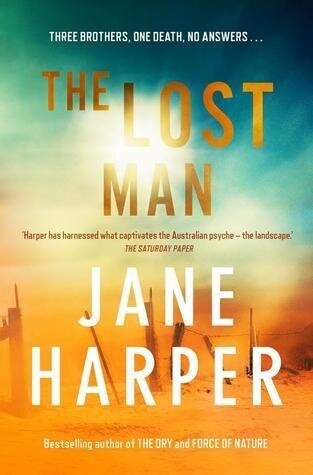
Australian Jane Harper has built a solid international reputation for her two crime novels featuring Federal Investigator Aaron Falk, The Dry and Force of Nature. Falk does not feature in The Lost Man, but his absence does not mean this novel is any less gripping or suspenseful than her first two. The story is set in the outback, at an isolated cattle station more than 1,000 km west of Brisbane during the hottest days of the Australian summer. The Bright family is one of the chief landowners in the area. One day shortly before Christmas Cameron Bright sets out on an errand but fails to return home, and his wizened body is later discovered at a local landmark called the stockman’s grave. Cameron—smart, experienced, respected—has succumbed to the pitiless and relentless heat, which can kill a man in a few hours. But what was he doing out there, alone, apparently unprepared and completely exposed? The most shocking and inexplicable aspect of the death is that his Land Cruiser—in perfect working order and fully stocked with water and food, none of which had been touched—is discovered about 9 km away. There was no distress call. The police force, which consists of a single officer, conducts a perfunctory investigation. But with no witnesses, no evidence that a crime has even been committed, and no suspects, the investigation stalls and produces nothing by way of conclusive results. Ultimately, it is ruled a case of death by misadventure, which means everyone assumes Cam, who by all accounts had recently later discovered at a local landmark called the stockman’s grave. Cameron—smart, experienced, respected—has succumbed to the pitiless and relentless heat, which can kill a man in a few hours. But what was he doing out there, alone, apparently unprepared and completely exposed? The most shocking and inexplicable aspect of the death is that his Land Cruiser—in perfect working order and fully stocked with water and food, none of which had been touched—is discovered about 9 km away. There was no distress call. The police force, which consists of a single officer, conducts a perfunctory investigation. But with no witnesses, no evidence that a crime has even been committed, and no suspects, the investigation stalls and produces nothing by way of conclusive results. Ultimately, it is ruled a case of death by misadventure, which means everyone assumes Cam, who by all accounts had recently been acting strangely and seemed to be troubled, took his own life. The family, especially Cam’s older brother Nathan, have doubts about this. Nathan, acting on nothing more than his gut, which pesters him with suspicions and a feeling that something is very wrong, starts nosing around, asking questions and peeling back the layers. Jane Harper is a patient writer, and the action proceeds slowly, haltingly, as myriad disconcerting family secrets and prior bad acts are dragged into the light of day. Nathan, a solitary soul with a complicated past, stumbles through a haphazard investigation into his brother’s death and in the process learns more than he wants to about himself and the people around him. One of the most compelling features of Jane Harper’s novels is her use of the Australian landscape to build tension and evoke human emotion. In The Lost Man, Australia’s beautiful, shimmering, deadly outback haunts every page. Jane Harper has outdone herself with this richly textured and thoroughly engaging novel.
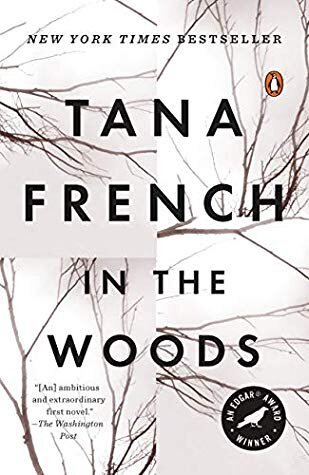
The woods of Knocknaree harbour a secret. One August afternoon in 1984 in this ordinary, serene semi-rural Dublin suburb, three children ventured into the woods, but only one came out. The three, all age 12, were inseparable best friends Germaine (“Jamie”) Elinor Rowan, Peter Joseph Savage, and Adam Robert Ryan. Adam Ryan was discovered by searchers, bloodied and catatonic but with no memory of what happened. Of the other two there was no trace. Flash forward twenty years. Jamie and Peter are still missing, and Adam Ryan is now a Dublin murder detective who, though damaged and haunted by the past, has not let it define him or hold him back. He goes by the name Rob Ryan and has told no one on the force that he is the survivor of that incident, no one except for his partner and best friend Cassie Maddox. But now there is a new case to solve—12-year-old Katy Devlin has been savagely murdered—and the setting is Knocknaree, the very wood where Ryan’s friends vanished. Ryan and Maddox catch the case, and Ryan marches into the fray fully aware that the secret he’s holding back calls his objectivity into question and could harm or even end his career should the truth come to light. But even though some of the people he confronts regarding Katy’s murder are people he knew or knew of when he was young, he decides it’s a risk worth taking. Especially when he spots similarities to the earlier case and senses a chance to put the past to rest. Tana French’s haunted by the past, has not let it define him or hold him back. He goes by the name Rob Ryan and has told no one on the force that he is the survivor of that incident, no one except for his partner and best friend Cassie Maddox. But now there is a new case to solve—12-year-old Katy Devlin has been savagely murdered—and the setting is Knocknaree, the very wood where Ryan’s friends vanished. Ryan and Maddox catch the case, and Ryan marches into the fray fully aware that the secret he’s holding back calls his objectivity into question and could harm or even end his career should the truth come to light. But even though some of the people he confronts regarding Katy’s murder are people he knew or knew of when he was young, he decides it’s a risk worth taking. Especially when he spots similarities to the earlier case and senses a chance to put the past to rest. Tana French’s first novel is a taut psychological suspense thriller that delivers on every promise it makes to the reader. In the Woods drips atmosphere and is crowded with richly drawn, fully realized characters engaged in compelling relationships. Narrated by Ryan, the intricately plotted story veers down blind alleys and sends the detectives on one wild goose chase after another in their pursuit of a truth that, even as the clues pile up and we close in on the culprit, seems more elusive than ever. However, though complex and multi-layered, the story never strains credibility or leaves you scratching your head. Maybe a few scenes descend close to the realm of melodrama, and some of Ryan’s more agonized, angst-ridden monologues could have been condensed. But French’s award-winning debut remains a carefully crafted and delightfully entertaining work of fiction, and totally deserving of the critical acclaim and numerous accolades that came its way.

It’s not often that a book comes along that offers the reader an experience unlike any he has previously encountered. Milkman is radical, innovative, immersive, not to mention challenging and, at times, brutally disorienting. The novel’s setting is an unnamed country at a time of civil unrest, which it makes sense for us to assume is Northern Ireland in the 1970s, at the height of the Troubles, with communities divided along religious and political lines and where people live under a constant threat of violence perpetrated by two warring factions: the renouncers of the state and the state police. 18-year-old middle sister is the narrator. Middle sister comes from a family that, like most of the families she knows, has been adversely affected by the ongoing conflict: her brother and brother-in-law have met violent ends. Her father is also dead. What middle sister wants more than anything is to fly under the radar, live by her own rules, distance herself from the conflict and not call undue attention to herself. Unfortunately, she has grown into a beautiful young woman who, in her striving for anonymity, has developed habits and practices that, unbeknownst to her, have attracted precisely the kind of attention throughout the community that she hoped to avoid and made her the subject of rampant rumour-mongering. Several things mark her as unusual: she runs for exercise, she reads books while walking, and she’s taking a night class in French. Specifically, middle sister has become an object of interest to the milkman, a high-ranking renouncer of the state, by all accounts a very dangerous man, who begins turning up when she least expects it, and who knows everything about her. Initially she is confused and frightened by his approach, unsure what he wants from her, uncertain how to behave toward him. When he talks to her, it is in a disarmingly circular manner, using language that demonstrates his thorough knowledge of her activities and relationships but is never overtly threatening or suggestive. And yet, these one-sided conversations (she never says anything) are filled with menace and innuendo, implying that a bond already exists between them and prodding her to change her conduct to suit community expectations. The action of the novel takes us through several anxious months in middle sister’s life, during which she struggles to make sense of what is happening while also making a series of startling discoveries about herself, her family, her “maybe-boyfriend,” and the meddling, hurtful, treacherous world in which she resides, where everyone is constantly being judged, where allegiances are assumed, and where to not act is in itself an act of defiance. The novel is narrated in a breathless rush. The prose is dense, the chapters are long, the paragraphs run on for pages. The language is endlessly inventive but sometimes repetitive. With few exceptions, characters are referred to by designations derived from some status or activity (“tablet girl’s sister,” “longest friend”) rather than names. There is conversation, but little in the way of dialogue. At times middle sister’s blasé observations about herself, her family, and others that make up her circle, are very funny. Milkman is a dazzlingly original work of fiction: a moving indictment of sectarian violence filled with moments of absurd energy and blistering honesty. It is also a book that demands that the reader give himself/herself to it completely, without reservation, because it must be read as it is written: breathlessly, in a rush. Without a doubt, middle sister is one of the more fascinating fictional characters you will encounter—we are invited deep into her consciousness where her heart, mind and soul are laid bare—and Anna Burns draws the brutal and tragic world in which she lives in minutely horrifying detail.
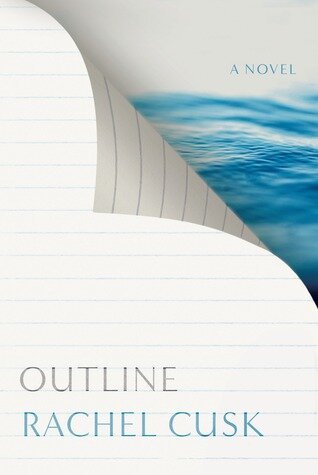
In Rachel Cusk’s episodic novel, Outline, a British writer named Faye has been hired to teach a short-term course in creative writing at a school in Athens. We meet her on the plane to Greece, where she has been engaged in conversation with her seatmate, a Greek gentleman much older than her. During the flight, they share their personal histories, both of which include failed marriages and divorce. It is a probing, deeply confessional conversation, with the participants at pains to explain why their marriages fell apart. It is also a conversation which compels them to reflect upon decisions they’ve made and view the impact of those decisions from the perspective of their interlocutor. The novel proceeds through its ten chapters in this manner, with Faye walking the streets of Athens, going to bars and restaurants, engaged in lengthy conversation with a variety of characters—other teachers, an old friend, the Greek gentleman again, a famous novelist, a famous poet, her students—all of whom use their time in the spotlight to question and probe and speak loquaciously and revealingly about their lives and loves, their needs, their desires, their regrets, their place in the world, and what it means to be male or female, as the case may be. And along the way, through these encounters, the outline of Faye's story is gradually filled in. It will be evident early on that in Outline Rachel Cusk is not striving for the kind of narrative momentum or continuity, or even coherence, that we are taught in writing classes a novel must possess in order to keep the reader turning the pages. In fact, Outline is a novel that deliberately subverts that principle, and is instead built around what could be regarded as a series of random—or, perhaps, selected—encounters. The common factor throughout is Faye. Everything we see and hear is filtered through her consciousness: coloured by her personal experience, her needs, desires, responsibilities and life pressures. Her coolly analytic, cerebral, non-judgmental, sometimes ironic observations about life, marriage, the city she’s visiting, the people in whose company she finds herself, are relentlessly fascinating and endow the book with the forward thrust of a thriller. In the end, Outline seems to suggest that the act of constructing an identity to present to the world is largely futile because other people will determine who we are when they interpret the things we say and do.
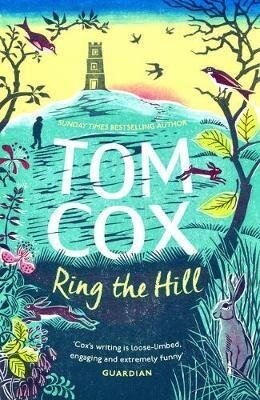
It’s impossible to imagine a more genial, candid, or generous tour guide than Tom Cox, whose fascinating, enlightening and moving accounts of his meanderings through the English countryside fill the pages of Ring the Hill. This is by no means a conventional travel book: the information it provides regarding towns, villages, hamlets, hills, rivers, fields, historical sites and monuments that are on Cox’s itinerary is secondary to the author’s often humorous, sometimes sobering reflections on being alive, and the story of his own life in progress: the relationships, observations, learning opportunities and personal decisions that have bestowed on him an uncommon degree of self-awareness and a vivid sense of his place in the world and, indeed, the cosmos. Tom Cox is less traveler than nomad: a man who moves house with unusual regularity, not out of dissatisfaction, but more out of restless curiosity, driven, one imagines, by a yearning for a new and different experience. Once settled into new digs—sometimes before settling—his custom is to go out and explore, compulsively and in any weather, the surrounding countryside and jot down his findings and commentary in a journal. In the six sections of Ring the Hill, Cox reports on ramblings through, among others, Glastonbury, The Peak District, Dartmoor and Dartington. Interspersed among descriptions of his discoveries and sightings are accounts of events taking place in his life at the time: visits with his Mom and Dad, encounters with and personal decisions that have bestowed on him an uncommon degree of self-awareness and a vivid sense of his place in the world and, indeed, the cosmos. Tom Cox is less traveler than nomad: a man who moves house with unusual regularity, not out of dissatisfaction, but more out of restless curiosity, driven, one imagines, by a yearning for a new and different experience. Once settled into new digs—sometimes before settling—his custom is to go out and explore, compulsively and in any weather, the surrounding countryside and jot down his findings and commentary in a journal. In the six sections of Ring the Hill, Cox reports on ramblings through, among others, Glastonbury, The Peak District, Dartmoor and Dartington. Interspersed among descriptions of his discoveries and sightings are accounts of events taking place in his life at the time: visits with his Mom and Dad, encounters with locals (human and animal), the music he’s listening to, an obsession with climbing hills, an equal obsession with swimming, extreme weather, the adventures of his cats, his struggles to keep a tidy garden. Cox writes from a perspective of great compassion for the natural world and for those among us who strive to nurture and protect that world: his critiques are generally reserved for the disfiguring scars that recent human activity has left upon the landscape. He is knowledgeable, a retainer and purveyor of facts, but also easily distracted: we often witness him changing course on a whim when something off the beaten path catches his eye. He is flawed but aware of and admirably at peace with his shortcomings. Discussions of the ways in which natural phenomena influence his moods cause us to suspect that here is someone highly attuned and sensitive to the rhythms of the planet. Casual references to the presence of the dead within the land of the living and the influence of ancient rites and customs upon the present lend a mystical note to the narrative. Make of me what you will, he seems to be saying, this is who I am. The overall tone in these pieces is wise and conversational, and it is a conversation that will leave you hungry for more while lingering in your mind long after you have finished reading the book.
February 12, 2019
Best Reads of 2018
Fiction writers are always striving for originality. Admittedly, in a crowded field where so much has already been accomplished, imitation is hard to avoid. It’s also hard to resist the temptation to imitate oneself: if something worked well in the past, why not do it again? But most writers don’t want to follow a well-trod path to someplace they’ve visited before, or where countless other writers have already been. There’s nothing new to see and it’s boring, not only for the writer but for the reader as well. As writers trying to carve out a niche for ourselves, we would prefer our vision to be distinct, our voice recognizable, our ideas uniquely our own. Every time they open a book we’ve written, our readers deserve a new experience. We want them drawn to our fiction because they can find something there that they can’t find anywhere else.
The goal of every writer is to tell a good story, but to do so in a manner that’s never been done before is exceedingly difficult. Lots of writers experiment with their work. They toy with form and structure; they dispense with conventional language; they throw characters into surreal or abstract worlds or place them in outlandish situations.
But with innovation comes risk, and all too often overt experimentation only alienates the reader. In extreme cases it can come across as self-indulgent: it seems as if the writer is having fun at the reader’s expense. The reader feels like she’s on the outside looking in, the target of an elaborate joke.
Finding new ways to tell familiar stories—finding new stories to tell: that’s where the challenge and the danger lies. It’s okay to test the reader, but ultimately the writer must engage the reader’s head and heart. Fail at one or the other and you’ve violated the time-honoured contract that fiction writers agree to when they put pen to paper: to awaken the reader’s mind to new ways of seeing and to do so in an entertaining manner.
All of the books on my 2018 Best Reads list are ground-breaking in one way or another. Language, structure, a skewed vision of reality—everything’s up for grabs. But it means these books are not simple or easy. They extend the art of storytelling in new directions and add tools to the fiction writer’s arsenal. They deliberately shake the foundations of established forms. They address topics head on that fiction usually ignores. Some of the authors are new, others will be familiar. But the thing they have in common is that the books they’ve written take the reader places they’ve never been before. Enjoy the ride.

In his latest collection of short stories, Richard Cumyn demonstrates, once again, his absolute mastery of the form. In these nine pieces, he presents diverse characters—male, female, old, young, of various backgrounds, social strata and levels of education—charting a wary course through life’s minefields. These are people we meet every day: our friends, colleagues, neighbours and relatives. They are us. Their worries are familiar and ordinary: love, work, children, parents, health, finances. But the special skill this author brings to the game is making the familiar and ordinary not just interesting, but fascinating. Richard Cumyn excels at depicting the drama at the heart of everyday life, the personal quandary in the quotidian. In these stories, he zeroes in on the point of friction chafing at a marriage, seeks out the emotionally charged backstory that prevents people from saying what they mean, gives us a moment of realization that, with the force of epiphany, blows a fragile relationship to pieces. His men are often confused and purposeless, beset by wayward impulses, looking for direction in a world that changes too fast and refuses to give them a break. Outwardly, his women appear confident, but their reality is often disappointment, lingering regret and indecision. Richard Cumyn’s fiction is undeniably challenging and has always addressed serious themes. This new book is no exception. But once again the stories are narrated in a boisterous, engaging, even playful manner. Endlessly inventive, Cumyn’s prose is filled with sly metaphors, imaginative wordplay and wry observations on contemporary life. He can be counted on to discover the comic moment in the midst of disaster. The Sign for Migrant Soul delivers proof that the short story is not just alive and well, but changing and evolving, and, further, that Richard Cumyn is not just another gifted writer of prose fiction but arguably one of the best currently working in Canada. Fans of the contemporary short story will find much to enjoy and admire in these pages.

An unsettling and utterly original work of genius, Owls Do Cry heralded the arrival of Janet Frame on the international literary scene and kicked off a period of staggering creativity in which she would publish nine novels in fifteen years. Owls Do Cry chronicles the lives of the Withers siblings, Daphne, Chicks (Teresa), Toby and Francie. Growing up in coastal Waimaru (based on Frame’s home town of Oamaru), the children are raised by their well-meaning, unsophisticated parents in a home with few luxuries and in a time and place where Toby’s epileptic seizures are considered shameful and frightening and a sign of weakness. The first part of the novel tells of their fascination with the local rubbish dump, where they often go to search for treasure, and ends with a tragic accident. Subsequent sections take place “twenty years after” and follow the three remaining Withers siblings as they suffer setbacks and struggle to remain connected and yet establish independent identities and lives of their own. Most powerful is the section on Daphne, who has been committed to a mental institution and regards her surroundings through a drugged and fragmented haze. The reality of these scenes is fluid and hard to nail down—hospital staff are monsters, a wall is a mountain—but it is in this section that Frame’s prose and narrative imagery achieve the vivid and poetic heights for which she was to become famous. One cannot help reading Daphne’s scenes through the prism of what we know of the author’s life: her own institutionalization and narrow escape from brain surgery as psychiatric therapy. Though there are flashes of humour, the prevailing tone of the novel is tragic, and yet one reaches the end with a sense that hope is not entirely lost. In 1957, Owls Do Cry appeared without literary antecedents, leaving critics of the time with virtually no points of comparison. Sixty years later it remains a deeply affecting work of startling originality. The courage of its author, one of the most daring stylists of twentieth-century English prose, is undeniable.

In the early chapters of Emma Healey’s confident and polished first novel, Elizabeth is Missing, Maud, who is in her 80s and suffers from dementia, lives alone in the family home where she grew up and has resided independently since the death of her husband. Her daughter Helen has engaged carers to look in on her and help her with basic tasks, but her condition has deteriorated to the point where she is easily confused and disoriented, so much so that she stuffs her pockets full of notes to remind her where she is going and what she is supposed to do when she gets there. In addition, her spotty recollection of recent events is leaving gaps in her memory for events from the distant past to leak in and cause even more confusion. Maud has always been obsessed with the fate of her older sister, Sukey, who disappeared without a trace shortly after the end of World War II. More recently, Maud finds that her friend Elizabeth has disappeared as well, and as her condition worsens the dementia causes the two mysteries to become conflated in her mind. Healey’s novel chronicles the gradual breakdown of Maud’s ability to separate reality from memory. In a series of poignant, painful, sometimes bizarre and occasionally humorous scenes filled with miscommunications and misunderstandings, Maud fumbles her way toward answers to both of the questions weighing on her mind. Healey fleshes out the novel with numerous flashbacks to Maud’s post-war life with her mother and father, compelling and deftly drawn scenes that take place immediately before and for several months after Sukey’s disappearance and which describe Maud’s attempts as an adolescent to get to the bottom of what happened to her sister. In composing this book, Healey faced enormous challenges that would have sunk a less talented writer. The masterstroke here is her evocative and convincing rendering of the thought processes of a dementia sufferer. Over and over again, she shows us Maud’s mind drifting as the past asserts itself in the present, as she fails to recognize someone with whom she was just carrying on a conversation, as she loses the thread of what she is trying to say mid-sentence. Maud’s reaction to these situations is sometimes frustration with herself, but just as often she sticks to her guns and denounces the people around her as daft and foolish. Moving, sometimes distressing, but always gripping and entertaining, Elizabeth is Missing is a different kind of suspense novel. To say that it is a triumph of empathy is to sell it far short. What Healey accomplishes in these pages is astonishing. Winner of the 2014 Costa Book Award prize for first novel.
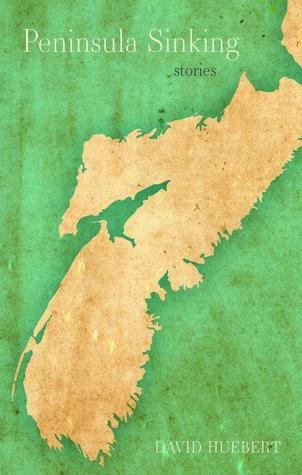
In David Huebert’s inaugural collection of short stories, we encounter a variety of characters standing on the edge of lives in the process of transformation. Huebert writes emotion like a raw wound—throbbing and bloody. With astounding and sometimes alarming ease, he peels back his characters’ protective carapace to reveal the naked, trembling flesh beneath. The CBC Short Story Prize winning “Enigma,” which opens the volume, is a powerful case in point. In this story the young narrator is facing the imminent loss of her beloved horse. The animal is lame, the situation is only going to worsen, and the narrator’s love is not strong enough to save either of them. In “Sitzpinkler,” Miles is heading out to sea on a submarine for 105 days, one of a crew of 58; the assignment: to defend the sovereignty of Canada’s 200-mile offshore limit. Miles comes from a family of eccentrics (his pet name for his father is “the old Nazi” and his mother has recently succumbed to Botox poisoning). For Miles, emotional support has been hard to come by and life often takes the opportunity to remind him of his shortcomings. And though he worries about what could go wrong on a vessel submerged under tons of sea water, as any right-thinking individual would, it turns out that the greatest danger he faces is not the crushing pressure of the ocean, but the risk that while confined in close quarters he will accidentally let down his guard and reveal his foolish private self. Elsewhere we encounter a lonely and mistrustful prison guard with a hopeless crush on an inmate (“Maxi”), a pregnant woman who sneaks drinks and then struggles with her guilt (“Horse People”), and a young woman who, amidst a series of minor calamities, is struggling to find direction (“How Your Life”). The centrepiece of the collection is the 60-page title story, in which we witness three snapshot episodes in the life of Gavin that extend from his teenage years to young adulthood. Like Miles, Gavin’s life is coloured by regret and dominated by a fear that his baser instincts and the fact that he has no idea what it takes to live a decent and productive life will be exposed for all to see. This story is also a heartbreaking love song to Gavin’s (and the author’s) home province of Nova Scotia, but one that doesn’t hold back when it comes to enumerating the love object’s faults and failures. Overall, the collection is a triumph. In each story Huebert creates complex characters and a complete world for them to inhabit. His writing is urgent, uninhibited, packed with minute but relevant detail, and often very funny. Peninsula Sinking is a noteworthy debut that heralds the arrival of a singular literary voice, one that many of us will be eagerly awaiting to hear from again.

Early in Mohsin Hamid’s challenging, sometimes brutal, and often profoundly moving novel, Exit West, as we are getting to know the two main characters Nadia and Saeed, we are abruptly lifted out of their story and taken to Australia, where a woman asleep in her bedroom in a Sydney suburb does not awaken when a man crawls out of her closet, a dark man “with dark skin and dark, woolly hair,” whose emergence suggests a difficult birthing, and who stands and looks around him in perplexity and then slips silently out the window and into the night. It is a disorienting moment, not just for the man but for the reader as well, who is being roughly initiated into the world of a novel in which the status quo is crumbling and borders mean little. Nadia and Saeed meet in a night class. Both are living productive lives, employed and with a more-or-less settled sense of who they are and what they want. Saeed, semi-devout, prays fitfully. Nadia, who covers herself with a black robe but does not pray, enjoys playing vinyl records and using mushrooms to get high. Their tragedy is living in a city that is on the brink of war, that is filling with refugees and under threat of insurgency. When the radicals defeat the government forces and take control of the city, and with murderous zeal impose a violent form of religious law on the stricken populace, Nadia and Saeed make the painful decision to leave home and family and go elsewhere. They are not alone: in Hamid’s vividly imagined alternative universe, the world order is being tested by a relentless flow of populations from one place to another by means that can only be described as magical. The remainder of the novel follows Nadia and Saeed as they journey together through stages of intimacy and gradual separation, as they and their circumstances shift and evolve, and as they each arrive at a new understanding of what they want from life that is bittersweet but seemingly inevitable. Hamid’s novel is narrated with plain-spoken yet lilting gravitas, suggesting that we are witness to something elemental and necessary. A quick read, the novel engages the reader with a touching personal story, but its subject is the human condition in a volatile and unpredictable modern world. A highly original treatment of a familiar subject, Exit West gives us much to ponder.
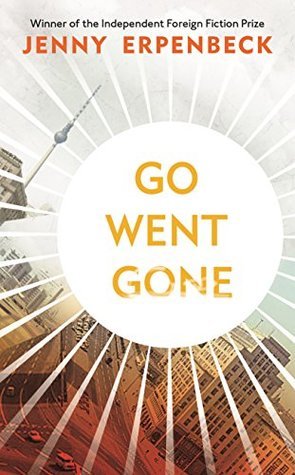
What is it like, to be forced from the only home you have ever known by some force or event beyond your control: armed conflict, famine, fear of persecution? What is it like to leave your family behind with no idea of the fate that awaits them, or, indeed, to barely escape with your own life after seeing them murdered? What is it like to embark upon a journey that offers no guarantee of survival and makes no promise that once you reach your destination, you will be allowed to stay? Though we see or hear news reports about the refugee crisis almost daily, most of us in the West have no concept of the hardship, humiliation, and discrimination that displaced people must endure, and the official intransigence, obstructive bureaucracy and psychological scars that stand in the way of making a new life in a new country. In Go, Went, Gone, German author Jenny Erpenbeck addresses this gap in our knowledge, depicting what happens to a group of immigrants who have arrived in Berlin from a variety of African states. The novel is narrated from the perspective of Richard, a widowed professor of Classics who, when we meet him, is cleaning out his office after retiring from his long-standing teaching post. Richard, self-sufficient, emotionally reticent, philosophically inclined, and finding himself with time on his hands, is pulled into a chaotic situation that local bureaucrats are making a botch of when he hears of new immigrants to the city staging a hunger strike—their demand: that they be permitted to work. Curious about their plight and embarrassed by his own ignorance, he begins his inquiry as any academic would, by reading, before approaching the men, in groups and individually, in order to speak and connect with them. Gradually, over many months, his empathy awakened, he inserts himself into their midst, learns their stories, their interests, their ambitions, and welcomes them into his home and his life, which becomes all the richer for it. Erpenbeck’s profound and unsentimental novel (ably translated by Susan Bernofsky) puts a face on a 21-Century human tragedy. For Richard, and for us, the lessons these young men can teach are indispensable to understanding the world we are living in as well as our own humanness.

The stories in Paige Cooper’s surprising and unsettling debut collection are boldly inventive, cryptic, eerie, and challenging. Reading these stories is a bit like watching the approach of a distant object as it comes slowly into focus, or staring at an abstract-impressionist painting and experiencing the revelatory moment when a haphazard arrangement of blobs, splotches and squiggles offers up its meaning. After reading these stories, however, one could be excused for suspecting that the author is not particularly concerned with meaning, or focus either, and certainly not with anything so boring as message or theme. What seems to matter most in these pages is the act of writing/reading as risk-taking and discovery. These are stories that openly defy narrative convention and thumb their nose at reader expectation. Each story seems to venture farther out on the limb than the one that precedes it. These are courageous and elusive fictions that challenge us to put aside our misgivings and follow their lead, forget about what we already know and give ourselves over to something unapologetically strange and baffling. Though it’s certainly true that bizarre, disorienting fiction is not exactly revolutionary, rarely do we encounter a writer who renders their off-kilter personal vision with such clarity and poise. Cooper’s astounding verbal fluency and uncanny powers of description are given prominent display on every page. Nothing in the book seems tossed off or slack. Her prose is mature, sophisticated and visually precise, her stories tightly constructed with sentences that have heft and depth. It is no exaggeration to say that Zolitude is one of the more auspicious literary debuts in recent memory, disturbing, memorable and uncompromising. Adventurous readers with a hankering for something off-beat will find their craving more than satisfied.
March 4, 2018
Some Thoughts on Writing and True Art

In On Moral Fiction, a classic volume of aesthetic theory written in defense of true art, John Gardner argues that art in its highest form imposes order on a chaotic universe by rendering it in terms that the human mind can comprehend. He asserts that human life and thought stand in opposition to chaos. “Art,” he maintains, “rediscovers, generation by generation, what is necessary to humanness.”
Gardner’s book, published in the early 1980s, is a response to a kind of writing that he regards as trivial and the critics who defend and promote it. His specific quarrel is with fiction that fails to do what he believes art is supposed to do, which is to help us discover what it means to be human. In recent years he had been disturbed to witness the ascendance of fiction that gazes inward rather than looks outward, that is concerned only with itself, that treats the artistic struggle as the be-all and end-all and relegates the rest of humankind (ie, the non-artists) to the scrap heap. The kind of fiction he is attacking deals in puzzles and plays games. It uses empty intellectualism, wordplay and trickery to hoodwink the reader into thinking they’re reading something momentous. This kind of fiction, he believes, is mean rather than generous and stands staunchly and defiantly, but without really caring (because it doesn’t care about anything but itself), against what art is meant to do.
Gardner takes his argument further. Art’s morality, he says, is founded in the fact that true art has nothing to prove: no agenda, no ax to grind, no doctrinal motivation. Art emerges, innocently enough, from a genuine impulse to explore: to see where ideas will lead, not to lead those ideas in a pre-determined direction. “Art is as original and important as it is precisely because it does not start out with clear knowledge of what it means to say.” And finally, he makes the point that art is life-affirming. It adds to our collective self-awareness. It strives to open doors rather than close them. It stimulates our curiosity. It gets us thinking and challenges us to agree or disagree. It questions without necessarily providing answers. It does not repel us; rather, it draws us to it. Art illuminates and enriches our experience of being alive. "True art," he claims, "is by its nature moral. We recognize true art by its careful, thoroughly honest search for and analysis of values."
I admit that I don’t normally obsess over questions about what fiction is and does. Where aesthetic theory is concerned, I’m an amateur. But as I set out to write yet another book (one that may, or may not, ever be completed or see the light of day), I find it encouraging to be reminded that there are people out there, like John Gardner, who feel and write passionately about precisely these matters, and who have thought long and hard about the fiction writer’s role in society.
It is especially heartening when a writer of Gardner’s stature admits (in print no less) that the experience of writing a novel does not begin with absolute clarity. The novelist discovers the novel he or she wants to write during the act of writing it. Novelists are magpies when it comes to ideas. Something grabs our attention (an image, a news item, an overheard conversation) and we stash it away for future reference. Maybe we’ll make use of it, maybe not, because novelists discard ideas as blithely and casually as they acquire them. Sifting through an accumulation of ideas when she embarks on a new project, the novelist discovers which have floated to the top, which have grown in urgency, which have become the most compelling. With luck, one or two of those ideas will spawn characters and dramatic situations and begin to generate a story: without necessarily trying to, at odd times during the day or night, the novelist will see her character going about his business, doing mundane things like feeding the cat, or surprising things like spying on his neighbours, and, again with luck, these incidents will not only give the character dimension and complexity, they will suggest further actions and events, and possibly additional characters and dramatic situations. If things are going well, the novelist will make fresh and startling connections. Characters, events, situations that at the outset stood discretely apart from one another in the writer’s mind will suddenly and inexplicably become linked, creating a pattern or design that the writer never anticipated but which, now that it’s there, seems inevitable. At this point the story has taken on a life of its own. The necessary elements are present; it’s the writer’s job to assemble them.
In this way, with a solid idea as its foundation, a novel is built, brick by brick, from the ground up.
This makes it sound like writing a novel depends on luck more than anything else. Undoubtedly luck plays a part. But when it comes to creative writing, there is no substitute for hard work. The successful writer makes his own luck. Each and every day the successful writer learns, once again, how to write, by taking up the pen or sitting at the computer and getting the words down. Reading manuals on the craft of writing will get you only so far. Eventually, you have to do the work. This requires commitment and a willingness to take risks. Your idea might be ground-breaking, guaranteed to have the publishers lining up at your door, but the only way to test the viability of an idea is to set out on the creative journey and see where you end up. The best idea in the world won’t take you anywhere if you can’t transform it into the building blocks of a story.
Writers are open-minded, willing to consider anything, and fiction that aspires to the state of art is open to every paradoxical and contradictory possibility that human nature can throw at it. This is where Gardner’s concept of moral fiction comes from. The novelist who sets out to create a work of art will let his idea roam freely and discover a path toward a resolution that is natural and true. Think of it this way: if a writer harbours a deep-seated prejudice of some kind and allows that prejudice to impose limits on his writing, it’s impossible for him to create true art because he must always shape or twist his work to accommodate that prejudice. This prejudice or bias can be conscious or unconscious, benign (nothing bad can happen on a sunny day) or pernicious (women are weak). It can even be something that many people unthinkingly accept as the truth (politicians are corrupt). It doesn’t matter. If the writer can’t free his writing from the shackles of a pre-conceived notion or ingrained belief, his novels, stories and poems will fail to address entire categories of human behaviour and be closed to storytelling avenues that do not support that notion or belief. The result will be work that is narrow and mean-spirited and possibly even morally repugnant. If it is well written, maybe it will appeal to readers who share the same belief or ideology. But any reader who approaches the work unburdened by its author’s predisposition will see it for what it is and toss it aside in disgust. It will simply not ring true. John Gardner would call it trivial. If it survives at all, it will be as an object lesson on how not to go about creating art.
I have read On Moral Fiction, mulled it over, and decided that, for the most part, it makes sense. It is not consciously on my mind every time I sit down to write, but I suppose it has pushed me to isolate my assumptions and biases and render these non-factors in my fiction, thus keeping it as true as I can make it.
Gardner’s book is much more complex and layered than this summary makes it sound. Written from the perspective of someone who sees the barbarians at the gates and is doing his utmost to buttress the ramparts, it is filled with extreme views and provocative assertions. It is also wise and profound. Occasionally cranky but never strident, it offers hope for those of us who sometimes need to be reminded that what we do is worthwhile and that fiction writers have a vital role to play in human society.
January 26, 2018
Best Reads of 2017
In 2017 the strong depiction of place in many of the books I was reading reminded me that at every step in the writing process the author must be conscious of the need to incorporate detail that brings the city streets, the countryside, the interior of rooms where his characters spend their time, vividly to life. In any piece of fiction, the author’s pledge to the reader is to provide a sensory experience. The need to precisely evoke the sights, sounds and smells that will make the setting, and thus the story, convincing and memorable, must never be far from the surface of the author’s mind. Setting grounds the action in time and space. The specific details are up to the author, but these details must make the story tangible to the reader.
It will be obvious, of course, that setting is crucial to fiction, on an equal footing with character and incident. Stories have to take place somewhere, and the reader has to be immersed in that somewhere, wherever it is. Unlike some aspects of writing fiction that are more or less intuitive, the choice of the setting for a story is normally made on a conscious level. Lots of writers make use of the world where they live their own lives. They locate their characters among the people, landmarks and objects they encounter when they step outside their front door. Some writers invent settings using details from places they've visited or read about. Others conjure up fanciful locations that exist only in the imagination. Any approach is valid, so long as the author's treatment of it makes it real for the reader.
One last thought: the writer who sets his story on the street where he lives is not being lazy. Writers know that not all potential readers share their experience. Not everyone who picks up a book is familiar with the community or city or country where the author lives. Unlike authors, books have the ability to wander the world unencumbered. Readers live everywhere. My boring little town might seem strange and exotic to someone living on the other side of the world.
The books on my 2017 list are notable for many reasons, but in each case the real or imagined place where the action unfolds makes an essential contribution to the experience that the story brings to the reader.
The Confessions of Josef Baisz by Dan Jacobson

The Confessions of Josef Baisz is presented as the posthumous memoir of one Josef Baisz, a minor official in the government of the fictional Republic of Sarmeda. The geographical specifics of Sarmeda are not provided, but the country has a North and a South. Baisz hails from the rural, backward North and, when he joins the Republican Guard, is relieved to escape his home town of Vliss and a family with a checkered past of which he is ashamed. While suffering through basic training in the company of bullies and dolts, he makes a lightning-quick decision that marks him as a hero. It is also a deliberate act of petty revenge that ruins the life of an ignorant and guileless fellow cadet, but this outcome troubles Baisz not at all. As a result of his quick thinking, Baisz is recruited to serve as personal bodyguard for the Deputy Minister of National Guidance, and the course of his career is set. Over the years, Baisz serves many masters, all of whom trust him implicitly, all of whom he holds in contempt and betrays in a variety of ways. It is by means of these betrayals and a combination of luck, cagey opportunism, and heartless scheming that he is able to steer his career in a mostly upward direction. By serving those in positions of power, the wily and observant Baisz finds himself uniquely situated to witness the rampant corruption and capricious brutalities of a totalitarian state that keeps its citizens subservient to an inflexible ideology and in thrall to the politically resilient Heerser, the Sarmedian see-all, know-all supreme leader. But when the ultimate reckoning comes in response to a betrayal more contemptible than any he has previously committed, one that even he can’t justify or condone, Baisz finds himself stricken by an unaccustomed fit of conscience and retreats from public life to compose his tattle-tale autobiography. Dan Jacobson’s novel is a triumph: an expert blending of style with substance. In Josef Baisz, Jacobson has created a loathsome and dangerous amoral creature: a man with no qualms about destroying others in order to gain an advantage or achieve advancement, but who also, like an insect or parasite, has no sense of purpose. Throughout the book, Baisz speaks to us in the confident and sardonic voice of someone who knows that his conduct is repugnant, that he lacks redeeming qualities, that he is undeserving of the success that comes his way, but doesn’t care because ruthlessness and sheer cunning will ensure his survival. What is unexpected is how funny the novel often is, as Baisz comments on the shortcomings of his superiors and informs us in gleeful fashion what he’s up to behind their backs. The Confessions of Josef Baisz is a wry commentary on human civilization in the late 20th century, with specific reference to the type of person who is likely to flourish in a society built on absolute control and the suppression of individual will. It is also an enormously entertaining and supremely intelligent work of fiction by an unjustly neglected author who, when it was published in 1977, was clearly at the top of his game.
Do Not Say We Have Nothing by Madeleine Thien

Madeleine Thien's multi-prize-winning novel is a sweeping journey through several decades of eventful and tragic Chinese history. The complex story, which weaves together various narrative threads, begins in Canada in 1989, with young Marie learning that her father, 39 years old and a concert pianist, has killed himself while living in Hong Kong. 1989 is of course a watershed year in Chinese history and politics because of the uprisings and protests that were tolerated for months before being brutally suppressed by the government, with the loss of hundreds and perhaps thousands of lives. The next year, in December 1990, 19-year-old Ai-ming, a relative fleeing the clampdown, arrives in Canada to live with Marie and her mother. Marie and Ai-ming form a close bond, but Ai-ming subsequently leaves Canada for the US; Marie loses touch with her and spends the remainder of the book trying to track Ai-ming's movements over the years. Much of the novel is a vivid and often heartbreaking account of the lives and hardships endured by an earlier generation of Marie's family who lived their entire lives in China, starting in the late 1950s and ending with the violence of June 1989, a 30-year swath that includes the Cultural Revolution, the death of Mao, the rise of Deng Xiaoping and the trial of the Gang of Four. For many of us in the West, the story of Communist China is a daunting and impenetrable tale of repression and brutality. Our knowledge is riddled with gaps and our comprehension rudimentary at best. Maybe we know a few names and phrases, but the pieces don't necessarily coalesce into a coherent rendition built on cause and effect. Thien deploys considerable narrative skill and a highly developed sense of drama to help us attain a more solid understanding of what took place during those years by relating the story of a group of people whose talents and ambitions centre on music, and who suffer severe and sometimes fatal trauma from the immediate and lasting effects of government policies imposed by a rigid and unfeeling totalitarian regime that treats its citizens like pawns on a chessboard whose lives are not their own to live. The narrative is sometimes disorienting, with its frequent shifts of setting and period and a sizable cast of characters. But the cumulative effect of the suffering depicted in these pages is emotionally devastating and memorable. With Do Not Say We Have Nothing, Madeleine Thien vaults into the front ranks of Canadian novelists, serving notice as well that she is writing sophisticated fiction for an international audience.
The Dhow House: A Novel by Jean McNeil

In Jean McNeil’s suspenseful novel, Rebecca Laurelson is a doctor on temporary leave after an attack on the NGO field hospital where she’s been treating the wounded. The hospital is in an isolated region of East-Africa where Islamic extremism is spreading and surrounding towns and villages are coming under threat. After leaving her post, she travels south to Kilindoni, on the Indian Ocean, a luxurious resort town where prosperous white Africans flaunt their wealth and carry on as if the dangers that threaten their way of life don’t exist. Rebecca’s Aunt Julia and Uncle Bill, eminent members of this set, live in the Dhow House, a roomy, well-appointed, well-guarded seaside retreat, lushly landscaped and situated behind gates. Rebecca was raised in England by her mother, Julia’s sister, and recalls seeing her aunt on only a single occasion when she was very young (as the novel begins Rebecca is in her late thirties). She also remembers that her mother’s family disapproved of Julia’s life choices. But even though Rebecca is a virtual stranger to her aunt and uncle and their two adult children, Lucy and the enigmatic Storm, they welcome her into their home and treat her as if they’ve known her all her life. Rebecca, however, traumatized by her recent brush with death and in a vulnerable state, is holding back. She can’t tell anyone what is really going on, a situation that only adds to her feelings of isolation and loneliness. Putting on a brave face, she fits in as well as she can and drifts through her weeks in Kilindoni, observing events and interactions that take place around her, attending parties and leisurely lunches, going to the beach, drinking wine, and getting acquainted with her extended family. Still, she can’t escape what she knows and can never truly relax. To make her situation even more precarious, she finds herself unable to resist an overwhelming physical attraction that shames her and that she knows is a betrayal. As the extremists move south and the violence creeps closer to the country’s urban centres, and the dangers that Rebecca knew all along were closing in on all of them finally take a lethal toll, her betrayal is discovered and she is forced to accept that there is no remedy for what she has done. Jean McNeil is a disciplined and patient writer. This is a novel that gains its considerable power from the author’s expert withholding and her subtle deployment of numerous moral ambiguities. In McNeil’s novels families are never simple and emotions are often as destructive as any roadside IED, and this is especially true of The Dhow House. Our fascination with Rebecca is driven in part by her damaged state of mind and the burden of emotional baggage she carries with her, which render her suspicious and unreliable. We often question what she does, but even her most brazenly self-destructive actions are dramatically appropriate and convincing. To be sure, The Dhow House is a novel that challenges the reader. Its structure is not linear. The story unfolds slowly. McNeil relies on flashbacks to fill in the blanks in Rebecca’s recent past. But the book is written with a sensual appreciation for the power of language to move the heart and stimulate the intellect. The frequent descriptions of the natural world dazzle with the precision of first-hand observation (the author is also an accomplished travel writer and memoirist). Jean McNeil’s is a mature talent, and The Dhow House is fully engaging at every level. It takes us into a world filled with menace and populated by people whose motives are often hazy, but it is a novel that we inhabit and from which we emerge with reluctance.
What Belongs to You: A Novel by Garth Greenwell

The unnamed narrator of Garth Greenwell’s remarkable first novel is an American living in Sofia, Bulgaria, who in the first section meets a street hustler named Mitko in the public washroom of the National Palace of Culture. The narrator—still relatively young—is gay and makes no secret of it. In fact, full disclosure is his credo, and we later learn that people at the university where he teaches are aware of his orientation and not concerned. The encounter in the washroom marks the beginning of a relationship that, in brief sporadic bursts, extends over several years. At first, the narrator is obsessed with Mitko, charmed as much by his youthful vigor and risky lifestyle as by his supple body and sexual proficiency. The narrator is also someone who learned who he was early in life, learned to accept his identity and everything it implied, even if his family did not. Much of the novel is given over to flashbacks or recollections, triggered when the narrator learns that back home in America his father is dying and wants to see him. The wound that this event opens is deep and, as we see, only in the early stages of healing. The narrator’s fascination with Mitko persists even after he learns that he’s been infected with syphilis, persists even after he consciously rejects the clichéd promiscuity that Mitko represents and settles into a monogamous relationship. He knows he has to cut him off, but what he cannot bear is Mitko’s loneliness, which is manifest in their every encounter and which again and again he takes it upon himself to assuage, even with Mitko treating his wallet like a personal bank account and occasionally even threatening physical harm. These aspects of Mitko simply feed the fascination. Greenwell’s novel is psychologically rich, uninhibited and dramatically intense. Densely written, every page crammed with evocative detail, the reflections on modern life offered up by its observant and acutely self-aware narrator are affecting, disturbing and thought-provoking. A supremely intelligent and lucid work of fiction that is also emotionally truthful, What Belongs to You will reward the adventurous reader looking for a new and genuinely original voice.
The Guilty One by Lisa Ballantyne
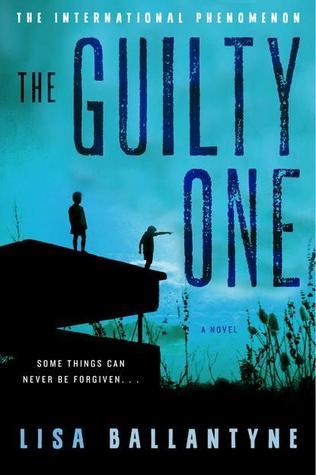
The Guilty One is an unconventional crime novel that takes its inspiration from the chilling modern phenomenon of violent crimes committed by children against other children. Daniel Hunter is a successful London lawyer in mid-career with a reputation for working with young offenders. When he is approached to take on the case of 11-year-old Sebastian Croll, he does not hesitate to accept. Sebastian is accused of the chaotic and bloody murder of 8-year-old Ben Stokes, whose body was discovered in a playground. Because he grew up in an unstable household—with an unreliable, drug-addicted mother whose boyfriends often beat him—and subsequently committed a variety of offences himself, Daniel is sensitive to Sebastian’s plight. Daniel knows he was lucky, even though he was removed from his home and placed in foster care. Daniel’s anger and often violent behaviour marked him as a hard case, and as a last resort he ended up with Minnie Flynn, an older woman living on a run-down farm in Brampton. Having grown up in the city of Newcastle, Daniel initially found Minnie’s hand to mouth existence and simple ways foolish and odd. Distrustful of all adults, he lashed out and repeatedly ran away, in search of his mother. However, Minnie was patient with him and refused to be intimidated. She let Daniel know that she understood his fear but that she also had expectations. Eventually, Daniel accepted his new situation and settled into life on the farm, even agreeing to let Minnie formally adopt him. Flash forward 25 or so years. Daniel knows what it is like to be small, helpless, and forced into a place where he doesn’t feel he belongs. He knows what it’s like to be so angry that hurting other people seems to make sense. His heart goes out to Sebastian Croll, but does empathy cloud his judgment? The case against Sebastian moves forward. The prosecution produces an eye-witness who saw the boys together on the afternoon of the murder, and others from Sebastian’s school and the neighbourhood where the crime took place who characterize Sebastian as a bully incapable of friendship. Though Daniel sometimes finds Sebastian unsettling and regards the boy’s interest in things related to death and blood unnatural, he tries not to let it distract him from his job. Moreover, Daniel can see that Sebastian has been affected by a less than ideal home life, with a self-medicating mother and a pushy, short-tempered father. Lisa Ballantyne’s novel proceeds along dual narrative lines: one thread following the case and Daniel’s defense strategy, the other showing us Daniel’s difficult childhood. The Guilty One is a smartly constructed novel that doles out clues in a deliberate manner, drawing the reader through its layered and complex plot toward a satisfying conclusion. In Daniel Hunter, Ballantyne has created an attractive and engaging protagonist, a young man riddled with self-doubt and regret, but also intelligent and self-aware. In this largely successful and highly entertaining debut novel, Lisa Ballantyne has written a dark and suspenseful legal procedural with a deeply affecting human dimension.
Before I Burn by Gaute Heivoll

Gaute Heivoll’s enormously satisfying novel/memoir, Before I Burn, recounts a period from the spring of 1978, when the people of Finsland--a remote, sparsely populated region in southern Norway--were terrorized by a series of deliberately set fires that destroyed homes and ruined lives. Heivoll’s cast of characters is made up of the people who were resident there at the time, a list that includes his own parents and, eventually, himself since he is born in the midst of the crisis. The book is billed as a crime novel, and though crimes are committed in its pages and police arrive to investigate, the prose has an undeniable literary polish and the story’s unconventional structure constantly chafes against the restraints of the genre. The action follows three distinct threads. In Finsland in 1978 fires are being set and no one can figure out who is responsible. At the centre of this is Dag, a smart, talented and deeply troubled young man and son of the local fire chief. In 1998 the twenty-year-old Gaute Heivoll, watching his father slowly succumb to cancer and profoundly dissatisfied with the routine path his life seems to be following, deliberately sabotages his law exams. And in the contemporary thread, Gaute, now a writer in his thirties, has returned home to Finsland with the intention of conducting first-hand research into the circumstances surrounding the fires while some of the people who experienced the fear and panic of those weeks in 1978 are still alive. Psychologically penetrating and chillingly evocative of what it must be like to feel threatened and helpless in your own home and suffer emotional turmoil at the hands of a force that is unpredictable and lacks both a face and a shape, Before I Burn grips the reader from the first scene and doesn’t let go until the unsettling epilogue.

